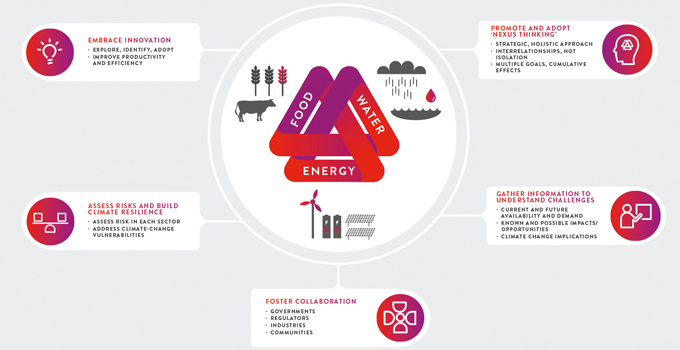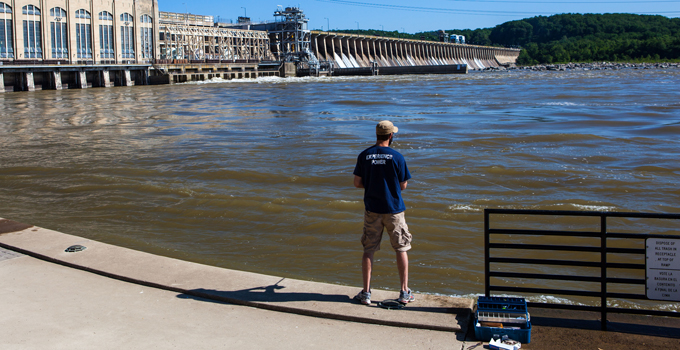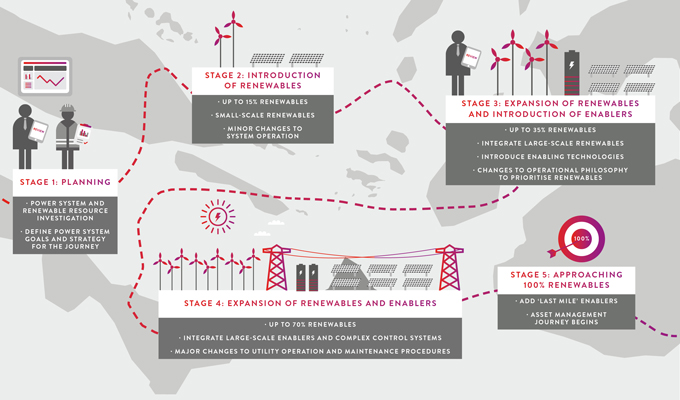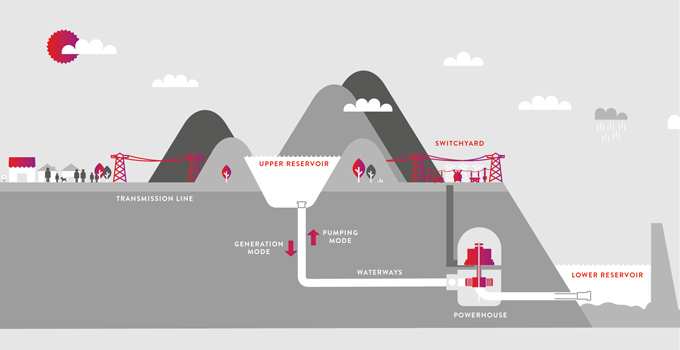Do you have the right SCADA strategy for your business?
Installing a SCADA system is a major outlay. With the ever-increasing pace of technological change, how can you ensure your new system or upgrade will repay your investment and deliver maximum benefits?
It’s almost impossible to imagine running a business in the power or water sector without SCADA and automation. The significance of the benefits of visibility and automation of plant and processes, particularly for remote assets, is unquestionable. However, to get the best return on your investment, your system needs to be functioning at its best.
Loss of SCADA means loss of visibility, production, time and money, but basic functionality is not enough. If your SCADA system is functional but not optimal, it is still opening you to risk . You could be missing out on valuable opportunities to increase your business efficiency, make smarter decisions and continuously improve your processes to achieve less downtime and more effective maintenance.
This means that any new system needs to be reliable, up to date, and future proofed – able to be effectively expanded and updated to accommodate developments in technology and changes in your business. And, for an older system, it means that you need to assess whether your system is still meeting your requirements or if it could be upgraded to do more for your business and protect you against risks. If an older system is still reliable and robust, you may not need to retire it or make wholesale changes.
Choosing a new system or approaching an upgrade
The first step is to explore and understand your options in the context of your business strategy. The right system isn’t necessarily going to be the one that is the latest trend or has the most bells and whistles – it will be the one that is best suited to the particulars of your business and your business goals.
Consider these questions:
- What are your short-term and long-term business objectives? Is the system you are considering consistent with these objectives?
- What can the available technology or systems do for your business today? For example, how will the technology or system eliminate or reduce current inefficiencies and costs?
- What is the potential of emerging technology to meet your future needs? For example, what smart functionality might really help your business over the long haul? Could improvements in modern SCADA systems be able to automate more tasks, integrate with other systems, or streamline reporting?
Before you acquire a SCADA system, fully explore the benefits of a comprehensive strategy to manage the system over its lifecycle, taking into account the lifecycle costs, benefits, risks and opportunities. Your strategy should also facilitate reliable systems that do not compromise anyone’s safety or wellbeing, that minimise impacts on plant or the environment, and that optimise the value obtained from the system.
As you proceed with the project, you’ll need to consider who will develop your functional requirements and standards for the SCADA system. Don’t buy a specification that was developed for use by other entities. Your requirements and expectations must be documented, and the system needs to meet them. Requirements should support the strategic objectives of your business, addressing key topics such as security, availability, performance and disaster recovery.
Start visualising your planned system through a high-level network diagram detailing interfaces to other business systems, operator stations and to other external links. Then carry out a preliminary gap analysis to identify disconnects between existing and future requirements. This will help you focus your efforts and make informed decisions.
When it comes to deciding on the system, consider procuring ‘off the shelf’ applications and minimising customisation and software development where practical. This may offer savings in the long term when upgrading is required, as some customised functionality may become incompatible with new versions.
Once you’ve selected a vendor or system integrator, consider whether you have the required skills and experience to evaluate their performance and to determine whether the system is being designed and implemented such that it will meet your requirements, standards and expectations. If not, involve someone who can oversee the project technically as ‘owner’s engineer’. Engaging someone skilled in design, implementation and testing will reduce your technical, operational and financial risks.
Planning to retain but improve your existing SCADA system?
It’s likely that there’s still a lot of value in your old SCADA system. To get the most out of your prior investment, try to identify which parts of the system still have worth or could be translated into a new system, and which parts need to be augmented or replaced.
Unreliable, unsupported, obsolete equipment and software should be the first to go; proprietary hardware or software should also be considered for replacement to allow for open connectivity, which will offer you a more flexible system architecture and greater software functionality.
From your old SCADA system, you may be able to retain your SCADA system point database through capturing and documenting it. You might be able to transfer or convert your historical data into the new system. Or you could consider developing your SCADA screens with a level of familiarity to your previous screens. But regardless of what you retain, you’ll require improvements that allow seamless changeover of your operations.
Other important considerations when you’re planning to improve an existing system are cyber security, redundancy, situational awareness and alarm rationalisation.
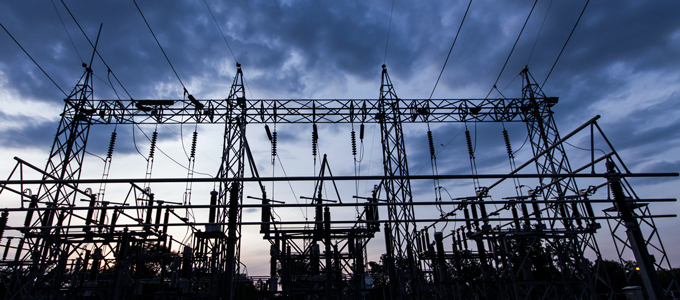
SCADA systems are too important and too great an investment to risk making the wrong choice . You need to be confident that your investment in SCADA will deliver the greatest level of benefit and reliability over the longest time. The best way to ensure a good decision is by putting in the groundwork to really know what’s available and what’s best for your business. Getting it right will free you up to reap the rewards of greater productivity and profitability.
If you would like to find out more about investing in a new or improved SCADA system, Patrick Pease or Shekhar Prince on +61 412 402 110.
This is the first article in a series on SCADA. In subsequent articles we will explore SCADA replacement and upgrade in more detail, investigate what you need to include in your SCADA system to improve operator safety and increase business efficiencies, and consider the financial case for a SCADA system implementation. Follow us on Facebook, Twitter or LinkedIn for future updates.
MORE THOUGHT LEADERSHIP ARTICLES
Can big data and artificial intelligence transform the wind sector?
Big data and advances in artificial intelligence hold extraordinary potential for transforming the energy sector. But is change in the wind sector likely to be transformational, or can we expect only incremental performance improvement?

For utility-scale wind farms, the benefits of big data technologies may not be on the scale of the transformations occurring in distributed generation, energy storage and demand management – but there is no doubt that there is potential for incremental improvements in the efficiency and cost of wind turbines, improved energy forecasting, and better fault prediction and detection – and that means opportunities for competitive advantage.
Big data, machine learning and AI
Big data is the result of having more data sources and more storage. We are now flooded with data of all types and we have the ability to store it, but the key challenge is making that data useful so that it can create value. Machine learning deals with computer models that apply algorithms allowing them to learn from experience, modify their internal rules and make better predictions. When you put the two concepts together, big data enables machine learning to act like an artificial intelligence (AI), creating systems that mimic cognitive functions such as learning or problem-solving.
Underpinning all this are computer models, which translate input data into outputs or predictions. For a wind farm, input data can include wind speed, turbine output, climatic conditions, error messages and condition monitoring data. The outputs might be improved turbine siting, predicted component failure, or predicted wind farm generation one hour in the future. Let’s have a look at some examples.
How can big data and AI help wind developers and operators now?
Plenty of research is underway into how big data and AI can optimise wind generation. Increased yield, more accurate forecasting, and more effective operations and maintenance are just some of the possibilities.
Increased yield
Greater yield means more generation and more power into the grid. The improvements in yield can come from improving the estimated power curve, and tailoring the operation of each turbine to suit the conditions.
A number of turbine manufacturers are developing and offering individual turbine tuning. This involves analysing the historical weather conditions and resultant production, and setting up specific control settings for different conditions. A more complex approach could allow a system to autonomously vary the turbine settings during the operation of the wind farm and learn the effect of those adjustments on production, retaining them for future use.
The verdict: Incremental yield improvements in the order of 1–5%.
More accurate forecasting
To balance energy supply and demand in the grid, as well as to maximise returns on the spot market, it’s critical to have accurate forecasts of a wind farm’s production.
Weather forecasting is a very popular area for researchers, and it seems that the entire range of machine learning algorithms has been applied in attempts to demonstrate superiority. Generally, in each case studied, researchers are able to show that machine learning methods improve upon the accuracy of classical prediction models. However, models and assessments all depend on the site, and no clear recommendation of one model can be made across the board. The best-performing approaches incorporate multiple numerical weather prediction forecasts, combined with live site data for wind, power and atmospheric conditions, and commonly use neural network methods.
The verdict: Incremental improvements in forecast accuracy, as meteorological agencies continue to incorporate machine learning components into weather models.
More effective operations and maintenance
More effective operations and maintenance (O&M) plans can significantly reduce a wind farm’s ongoing costs and increase its output and operational life. Because O&M are major expenses with all industrial machinery, there’s a lot of work being done in predictive maintenance and fault detection.
One opportunity is using SCADA data to detect faults. The approach is to train a model during normal operating conditions to predict a measurement, for example, bearing temperatures. Then input the current operating conditions and flag where the observations don’t match the prediction. This can allow abnormal behaviour to be picked up early, before a major component fails.
Wear and tear on each turbine’s individual components can be tracked using the specific conditions to which the turbine on site has been subjected. Components that need replacement or can be safely left in service can be identified by collecting the full operating history of individual turbines, and using a representative computer model of the turbine. This can provide savings based on extending conservative estimates of serviceable life, and allowing better scheduling of maintenance through earlier signalling of the need for component replacement.
The verdict: Gradual lowering of costs of O&M and lost yield, as parts can be replaced prior to catastrophic failure.
Where are we going?
There’s no doubt that the future will see widespread take-up of machine learning services, and even more data. The ‘internet of things’, or the idea that everything will be network-enabled, will mean that big data will get even bigger. With that come data storage issues, but also potential for even more fine-grained analysis, if the right tools can be developed.
We are likely to see more tech companies offering to apply data analysis and machine learning services. However, it is also likely that data analytics will be built into systems and supplied as standard, particularly for equipment such as gearboxes or entire wind turbines.
But the biggest related change we see is the impact on the competitiveness of businesses, their services and products in our industry. For example, the last ten years has seen significant consolidation of wind turbine suppliers. In the United States three wind turbine suppliers accounted for 78% of new capacity in 2016 (according to the US Energy Information Agency). Substantial benefits can be offered by those wind turbine suppliers that are able to analyse the data pulled from a critical mass of installed wind turbines and their hard-won operating experience in a range of locations and conditions.
Being part of a large interconnected worldwide network of wind turbines is proving to be an attractive proposition for wind farm owners. The consequences include a trend towards longer and more comprehensive O&M agreements with the original equipment manufacturers, and a reduction in the perceived risk in providing finance to wind farm projects – just two of many trends that are contributing to a truly transformational change in the energy generation sector.
The verdict: Continuing gradual technical improvement, and significant commercial opportunities for suppliers leveraging data from large install bases.
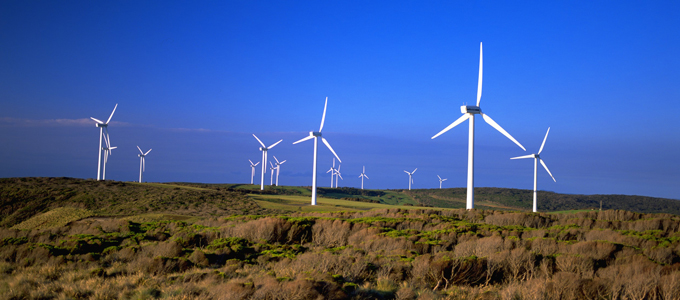
The improvements from applications of machine learning are fascinating for the technically inclined, and are already improving the performance of wind farms worldwide. However, we don’t consider them transformational when compared with the major changes the application of AI will have in other industries such as transportation (e.g. self-driving cars).
Big data, machine learning and artificial intelligence offer current and future benefits for wind farm developers, manufacturers, owners and electricity market operators and traders, and it’s worth considering the applications, while understanding the limitations.
If you would like to find out more about how Entura can help you use data and machine learning to optimise your wind farm, contact Patrick Pease or Silke Schwartz on +61 407 886 872.
About the author
Daniel Bennett is a renewable engineer at Entura. He has near a decade of experience investigating feasibility and due diligence energy yield assessments for renewable projects in Australia and around the world. With a background in mechanical engineering and computer science, and an interest in poking around in data to see what falls out, he assists clients seeking to understand the value in their projects.
MORE THOUGHT LEADERSHIP ARTICLES
The foundations of successful large-scale solar farms
On any large-scale renewable energy project, every opportunity to reduce costs counts.

Utility-scale solar farm projects require significant investment. So to keep total project costs under control and ensure success, it is vital that every step in design, construction and operation explores the most economical ways to create an efficient and safe project for the long term.
Although the civil engineering components of site development for a large-scale solar project may be smaller than the structural or electrical packages, civil costs during construction could add up to 8-10% of the total project cost – and that’s nothing to sneeze at.
Upfront consideration of costs and risks – both short-term and long-term – in the civil design of the plant can make a sizeable difference to the project’s total cost of construction, cost of long-term maintenance, and long-term financial returns.
Achieving the best and most economical civil works design means thinking carefully about the specific conditions of the site and the expected operating conditions of the project over 25 to 30 years, taking into account the potential for these conditions to change over time.
Getting the foundations right
Utility-scale solar farms need ground mounting systems and layout that suit the specific topography and geology of the site. Identifying the optimum solution in these areas is a key part of achieving a cost-effective design.
The mounting system functions as a foundation structure, and can also set the orientation and elevation of the PV arrays to maximise energy performance. Orientation, tilt and elevation need to be addressed in the civil design, for example to work out the PV panels’ ground clearance or likelihood of collision. As PV panels are lightweight structures, design of a stable foundation must also attend to vertical uplift and lateral resistance, in accordance with the relevant standards.
The various brands of tracking systems all compete to provide cost-effective solutions, particularly to address the challenges of undulating sites – so research the range of options to find the best fit for your project.

The challenges of undulating sites.
A lack of proper geotechnical ground investigation can lead to selection of inadequate foundation types, resulting in costly variations and delays. On-site pull tests will help support and augment the recommendations of the geotechnical study to optimise selection of a cost-effective foundation solution.
Installations that follow the topography are likely to allow a reduction in earthworks (cut/fill) and allow easier and more consistent choice of pier height and length per row. Shorter rows can follow the terrain better than long rows, but this is not the only criteria for selection. You should also consider aspects such as cost of cable management, extra motors and installation time.
The height/length, material and foundation options for piers become very significant when dealing with thousands of piers per solar farm. This means that you need adequate representation and quality assurance for design outputs.
Each individual pier height should be determined from detailed topographic surveys and computer modelling, taking into account the different minimum heights required to avoid ground collision, and the maximum heights that will be most economical for long-term operational and maintenance.
Another consideration in the search for cost savings is balancing the distribution of piers against the cost of earthworks, which will vary depending on the depth of cut and fill required.
There are a number of different foundation options, such as driven steel piers, screw piers, and precast concrete footings. But determining the appropriate choice must be based on a comprehensive understanding of the geology and geotechnical model of the entire site – which may vary across the large area of land occupied by the solar farm.
Rocky sites may result in driven piers reaching premature refusal. Sandy sites will vary in cementation and looseness, influencing any attempt to have a constant pier ground embedment. And clayey sites are prone to shrink-swell changes depending on changes in the level of moisture due to flooding or drought.
Planning for a changing future
For prudent design, you need to consider how the site conditions could change over the whole life of the solar farm, as early pull tests won’t predict future conditions. For example, how could the site be affected by flooding or by erosion – both now and under future climate conditions?
Thorough stormwater assessments (hydrological and hydraulic) are required to develop a good understanding of the existing (before development) and proposed (after development) drainage patterns of the site. If the site development alters the pre-development conditions, sediment control measures will need to be put in place.
The stormwater modelling will help to quantify the extent of flooding and potential for erosion.
For flat sites, allow for inundation (with major impacts on construction and potential deterioration of the site, trenches and foundations); for undulating sites, expect flash flooding and potential erosion and transfer of sediment.
Floodwater heights might affect solar farm infrastructure such as tracker motors or combiner boxes, so these will need to be installed at safe heights to minimise major potential repair or replacement costs.
Stormwater assessments will also quantify erosion potential around foundations, so that you can put suitable control measures in place, such as allowing for internal and external discharge points and armouring erosion-prone areas with riprap or erosion protection geotextiles.
Beyond the solar array
A number of other factors need to be considered in the civil works package, all of which have potential for efficiencies to reduce cost and avoid delays.
Roading alignments (horizontal and vertical) must consider the different needs of the construction phase and the longer-term operational period. Design of earthworks and road surface should take account of potential impacts on drainage patterns and potential erosion at low points.
Cable trenching should address interfaces and collisions with other infrastructure, and the need for backfill to meet requirements for thermal resistivity and strength.
Fencing is required for adequate site security specifically during operational life, but must be considered along with the need for access at various stages of the project. Fencing insulation and earthing needs must also be assessed in the design.
Civil design will also address the requirements of hardstand and laydown areas, particularly for the demanding construction phase.
Designing the risks out of your project
Based on our experience, we recommend that the civil design of a utility-scale solar farm should go through three phases: concept design, optimisation, and detailed design. If you rush from the concept design phase into detailed design, you’re opening your project to risks.
Significant optimisation will then be needed during the detailed design phase, which could potentially alter the concept design. That means rework, costing you time and money.
To achieve a civil design that avoids project risk and sets the right conditions for cost-effective delivery, be sure that you have timely, accurate and comprehensive topographic and geotechnical data about the site, that you carefully consider your earthworks material and handling, and that your systems and equipment interface all infrastructure effectively.
Keeping construction budgets under control and schedules on track depends on all the careful, detailed work done across all the aspects of the project at the design stages. Get your civil works right, and you’re tilting your solar farm towards success, whatever the weather.
To find out more about how you can ensure a cost-effective civil design for your solar project, contact Patrick Pease or Silke Schwartz on +61 407 886 872.
MORE THOUGHT LEADERSHIP ARTICLES
‘Nexus thinking’ for a secure and sustainable future
As the global population continues to grow, how can utilities and water managers balance the increasing and interrelated pressures on water, energy and food?
The complex triangular relationship among these three pillars of life is known as the ‘water-energy-food nexus’. It’s an intricate puzzle, in which the increased demand for each limited resource can significantly affect the security of all three.

According to the International Renewable Energy Agency, over the next few decades, global growth in population, economic development and urbanisation are expected to raise demands for water and food by 50% and to double the demand for energy. Water, energy and food are all fundamental to growing economies, alleviating poverty, and improving health and educational opportunities worldwide. To create a sustainable future, we must seek holistic and integrated solutions for water, energy and food challenges , as well as the appropriate balances amongst them.
With water being so central to food security and energy security, the potential impacts of climate change on water resources are of increasing concern. Climate change is likely to raise average temperatures in many locations, change the patterns of rainfall and inflows, and affect the frequency and severity of extreme weather events such as drought or floods – all of which increase vulnerabilities for water, food and energy resources already under strain.
A nexus approach
Our experiences throughout Australia and the Asia-Pacific region demonstrate that there is no single solution to the challenges of this nexus. It is really about a way of thinking and approaching decisions rather than a fixed solution or response.
These five broad considerations are likely to contribute to improved nexus outcomes.
Promoting and adopting ‘nexus thinking’
‘Nexus thinking’ means considering and understanding water, food and energy and their interrelationships, rather than viewing any in isolation. It is a strategic and holistic style of thinking that considers long-term implications across the nexus, weighing up and balancing social, economic and environmental goals.
Nexus thinking looks at the big picture: considering the whole catchment or river basin, trans-boundary issues, multiple uses (existing and future) and cumulative effects. It also involves thinking across agencies and organisations where responsibilities for water, food and energy lie.
Gathering the best information to understand nexus challenges
Responses to nexus challenges are more likely to be effective and sustainable if they are based on an informed and risk-based understanding of present conditions and possible future scenarios (taking into account interrelationships across sectors and regions).

This means that decision-makers need to understand the resource availability, current demand, known impacts, development opportunities and potential climate change implications in a given situation. They also need to understand what stakeholders and communities need, and explore opportunities for additional benefits to be realised.
Fostering collaboration among government, regulators, industry and communities
All stakeholders can benefit from collaborative and cooperative responses to the nexus and to stewardship of resources. The potential wins include better economic outcomes, improved reputation, reduced risks, avoided conflict, and opportunities for greater synergies. Reaping the benefits will require partnerships and cooperation among food-producing industries, the energy sector and other water-dependent industries, as well as local communities.
It’s also essential that governments, regulators and communities are closely involved in all decisions and developments affecting water, energy and food resources so that different priorities and opportunities can be considered. At a policy and regulatory level, cohesive and stable governance, policy and strategies are needed to facilitate and encourage the right collaboration that brings benefits to all stakeholders.
Assessing risks and building climate resilience
The water-energy-food nexus brings risks as well as opportunities . Interrelationships between water, energy and food, and the threats posed by climate change, should be built into risk assessments in each sector. State-of-the-art data collection, modelling and forecasting can assist businesses, governments and communities to better understand and mitigate their specific climate-related vulnerabilities and take action towards building greater resilience to future climate change impacts.
Innovating
In the water, energy and food sectors, technological and other innovations continue to expand the opportunities for improving productivity and resource efficiency for long-term sustainability of pressured resources.
Nexus challenges may also bring opportunities
The nexus is not only a dynamic of ongoing resource competition. Integrated planning offers opportunities for potential synergies and benefits among sectors.
For example, in the hydropower sector, electricity generation is intrinsically linked with water availability. The need for water for irrigation to produce food and to drive agricultural productivity may compete with water requirements for hydropower generation. Hydropower’s water needs may also compete with the requirements of urban water supply, other industries and environmental and social needs.
However, renewable energy resources such as hydropower can also offer benefits to the water and food sectors through improving water resource management, providing multipurpose storages, contributing to the development of water supply infrastructure and, of course, generating the electricity critical to food-producing industries.
Many existing hydropower storages, both in Australia and internationally, were developed solely to supply water for energy generation. However, over time and with increasing competition for water and food, the storages have become multipurpose, often providing water for domestic supply, irrigation, and commercial and recreational fisheries.
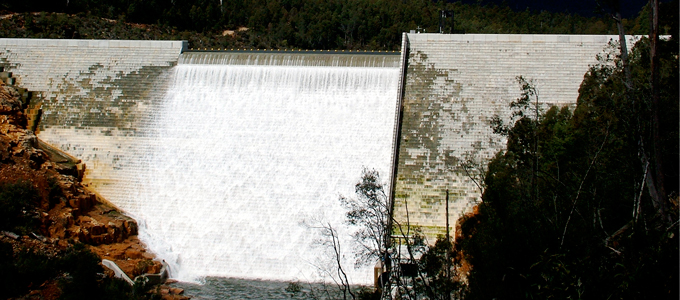
In South-East Asia, some hydropower storages are now more important as a source of irrigation water for downstream communities than for the energy they generate. By providing water to the downstream communities, irrigation and food production has increased significantly since development of the schemes, lifting the economic development of the region and providing benefits across the community.
Integrating other renewable energies into water supply, irrigation and food production can also provide mutual benefits, such as utilising renewable energy for pumping on farms or for water desalination. Incorporating small hydropower into existing water infrastructure can improve efficiencies and create new low-carbon income streams to support effective water supply delivery. Another innovation of attaching solar PV to covers on water storages provides electricity for pumping while minimising evaporation and maximising water availability.
Whether at small-scale single utility or local geographic area or at a national or multinational scale, nexus thinking can bring about mutual benefits for energy, water and food outcomes .
If you would like to find out more about how Entura can help you develop a sustainable water or energy solution or respond to the challenges of the water-energy-food nexus, contact Dr Eleni Taylor-Wood on +61 3 6245 4582.
About the authors
Dr Eleni Taylor-Wood is Entura’s Principal Consultant, Environmental and Social Science. Eleni has more than 20 years’ experience successfully managing large-scale, complex projects that run over several years, as well as providing expert advice and independent review for a range of infrastructure and planning projects. She has worked on projects around the world including in Australia, Mozambique, South Africa, Iceland, Colombia, India, Malaysia, Mekong, Solomon Islands, Fiji and Papua New Guinea. Her experience covers a vast gamut of studies including: environmental and social impact assessment and management; strategic management of wetlands and waterway; feasibility and approvals for new hydropower projects, environmental flow determination and assessment, and sustainability assessments. Eleni is currently one of eleven Accredited Assessors under the Hydropower Sustainability Assessment Protocol worldwide.
MORE THOUGHT LEADERSHIP ARTICLES
Batteries vs pumped hydro – are they sustainable?
A sustainable grid needs sustainable energy sources. While there’s no doubt that it makes sense to store renewable energy, whether in batteries or in a pumped hydro scheme, just how sustainable are these technologies?
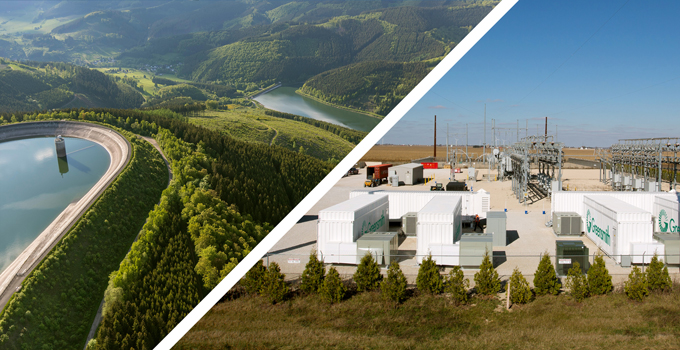
As we move rapidly towards ever-greater levels of wind and solar power in the network, increasing quantities of storage are needed to smooth intermittency and ensure secure supply. Pumped hydro energy storage and batteries are likely to do much of the heavy lifting in storing renewable energy and dispatching it when power demand exceeds availability or when the price is right.
We’ve previously compared the two technologies in terms of their costs, the speed with which they can be deployed, and their ability to support the grid. Here we compare their sustainability in terms of storage efficiency and capacity, safety, use of scarce resources, and impacts through all stages of their lifecycle.
Storage efficiency and capacity
For both batteries and pumped hydro, some electricity is lost when charging and discharging the stored energy. The round-trip efficiency of both technologies is usually around 75% to 80%. This level of efficiency for either technology represents a significant displacement of non-renewable generation if we assume that the stored generation would not otherwise occur.
A particular consideration for batteries is degradation. Batteries degrade as they age, which decreases the amount they can store. The expected life of the batteries that will be used for the recently announced battery storage project in South Australia is about 15 years (depending on how the batteries are operated). By the end of that time, the capacity of the batteries is expected to have dropped to less than 70% of their original capacity.
To maintain a reliable and steady capacity for storage as batteries age and degrade, large-scale battery plants will require ongoing staged installation and replacement of batteries. In comparison, the degradation of pumped storage is close to zero. With appropriate maintenance, peak output can be sustained indefinitely.
Safety
No storage solution can be considered sustainable unless it is safe. The greatest risk relating to pumped storage is dam safety. If it occurs, dam failure can affect downstream communities and the environment, with its impact potential likely to be far greater than a battery safety incident. Nevertheless, pumped hydro technology is mature, dam risks are generally well understood and managed, and the frequency of dam safety events is low.
The main safety concern for batteries is thermal runaway leading to explosions and fires. The severity of this risk will depend on how a battery project is implemented. In a modular arrangement, thermal runaway would be localised, not affecting the whole bank. However, because of the very rapid deployment of evolving battery technologies, safety standards may not be rigorously enforced.
Impacts on land and water
Pumped hydro and grid-scale battery plants may have environmental and land-use impacts. These impacts would vary depending on the sensitivity of the site selected.
A grid-scale battery facility needs a relatively small parcel of land and is likely to be able to be created very close to the energy demand or where generation occurs. Land in these areas has often already been disturbed and the new operations may have little extra environmental impact. Land and water impacts of batteries relate more to their disposal at the end of their effective life, and to the extraction of the resources to produce new batteries.
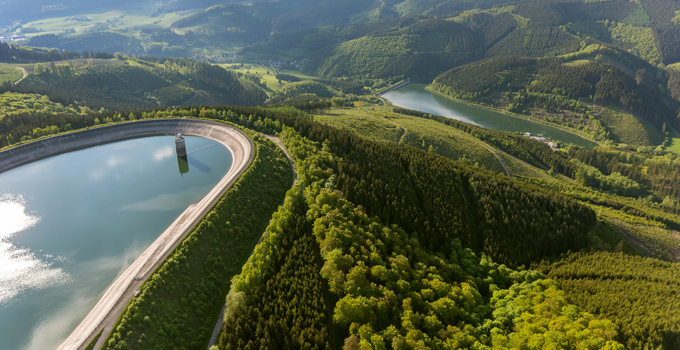
Pumped hydro requires a relatively larger parcel of land with a very particular topography, and may be far from the location of the demand. Any potential environmental impacts associated with construction and operation need to be considered and mitigated, including those immediately associated with the site, as well as downstream.
In most construction of new pumped hydro, sites are selected where impacts can be mitigated to acceptable levels, for example by using existing reservoirs, or locating ‘closed loop’ systems away from rivers. Although these arrangements will have lower overall impacts, some environmental challenges may still occur during construction when existing water is removed from the site as well as finding a source of water without impacting the environment and other users.
Environmental impacts during operation of pumped hydro are minimal. However, the ecology within the reservoirs will need to adapt to frequently changing water levels, reducing diversity in the system especially within fringing communities.
In all pumped hydro systems, water is re-used over and over again, extracting maximum value from the resource. Nevertheless, depending on the configuration of the pumped hydro project, there may be an ongoing demand for water to top up the storages to counter evaporation.
Minerals and materials
Batteries and pumped hydro require a range of different resources and materials. Lithium-ion batteries use common materials such as plastic and steel as well as chemicals and minerals such as lithium, graphite, nickel and cobalt. Although pumped hydro mainly relies on common building materials such as concrete and steel, the quantities of these materials and the construction impacts can be significant.
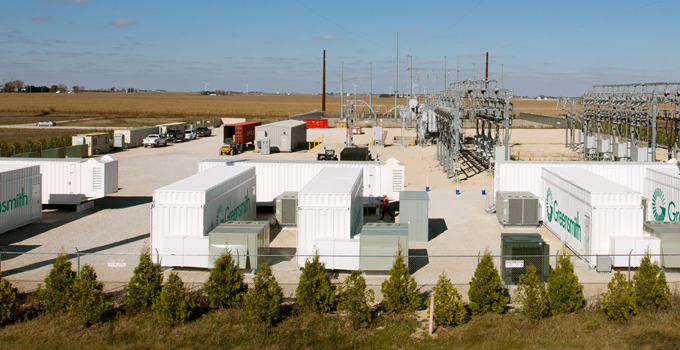
Image courtesy of Greensmith, a Wärtsilä Energy Solutions company.
Determining the ultimate sustainability of the required resources and materials for both technologies needs to take account of the full lifecycle and supply chain (mining, processing, refining and manufacturing) as well as end-of-life issues such as recycling, disposal or decommissioning.
Currently, the environmental and health impacts of mining are a significant sustainability concern for the battery industry, and impacts are likely to intensify as worldwide demand for the necessary minerals rapidly increases. Short-term availability of many of the necessary minerals for battery development, such as lithium, appears sufficient, yet security of supply could be compromised by geo-political factors, and long-term availability will depend on levels of demand.
Ultimately, the minerals used in lithium-ion batteries are finite resources, so limiting or reducing their extraction (for example, through greater recycling or substitution for another battery technology) would increase longer term sustainability.
End of life
A battery’s life depends on the technology and on frequency of charging and discharging. Once their effective life is up, the batteries must be disposed of and replaced. Disposal of batteries is a problem we’re yet to face, but as large-scale battery storage proliferates, increasing numbers of batteries will enter the global waste stream. Without careful management of disposal, what cannot be recycled may end up in landfill and may be corrosive, flammable, or could leach toxins into soil and water.
The development of cost-effective and efficient battery recycling methods is still in its infancy.
Although most of the components of batteries can be recycled to some extent, recycling is currently expensive and there is insufficient volume to encourage commercial enterprises to take on recycling the new generation of batteries. In time, improved recovery and re-use of materials will certainly increase the sustainability of battery storage, preserving virgin resources and reducing the impacts of extraction and processing.
End-of-life considerations for pumped hydro seem very distant right now due to hydropower’s longevity, but sustainable decommissioning still needs to be planned for, including managing the impacts on the downstream environment if a dam is removed and rehabilitating the reservoir area.
Lifecycle analysis
At this early stage of development of large-scale battery technology, comprehensive lifecycle analysis is limited by the diversity of battery materials and widely different scenarios of charging, battery life and recycling.
In contrast, the full lifecycle of pumped hydro is better understood due to the maturity of the technology. Pumped hydro is not without impacts, but the risks are known and generally manageable. A major advantage of pumped hydro over batteries is that the expected life of pumped hydro is more than 100 years, or effectively unlimited with appropriate maintenance.
Batteries may have a lower upfront cost than pumped hydro and be easier to approve and install; however, they are likely to require greater management over time. If a projection is made based on current information, the full lifecycle cost and impact of batteries may be greater than hydro across the long term, particularly when mining, recycling and disposal are taken into account. Yet, battery technology is likely to improve very rapidly, which would tighten the gap on pumped hydro’s current lifecycle advantage.
A greener grid
Worldwide, increased levels of renewable energy will lead to a greener grid. It is easy to recognise the sustainability benefits of using a storage solution such as pumped hydro or batteries to further enable the decarbonisation of the network through greater uptake of renewable energy. However, the storage solutions that enable more renewables must also be sustainable – not only in the use phase, but also upstream and downstream.
It is difficult to make a straightforward comparison of the sustainability credentials of pumped hydro and battery storage technologies at their very different stages of maturity. As battery technology is still evolving, its overall sustainability is still somewhat uncertain, but this will change with experience and improvements in battery life and recycling. Meanwhile, pumped hydro projects can last up to a century and associated risks are known and can be mitigated.
Either way, as we redevelop the electricity grid, we will also need a mature approach to lifecycle analysis of our storage solutions.
About the authors
Donald Vaughan is Entura’s Technical Director, Power. He has more than 25 years of experience providing advice on regulatory and technical requirements for generators, substations and transmission systems. Donald specialises in the performance of power systems. His experience with generating units, governors and excitation systems provides a helpful perspective on how the physical electrical network behaves and how it can support the transition to a high renewables environment.
Nick West is a civil engineer at Entura with 16 years of experience, primarily in hydraulics and hydropower. Nick’s skills range from the technical analysis of the layout of hydropower projects to the preparation of contractual project documents and computational hydraulic modelling. Nick was a key team member of the Kidston Pumped Storage Project Technical Feasibility Study.
MORE THOUGHT LEADERSHIP ARTICLES
Building climate resilience into operations: Hydro Tasmania’s journey
Climate change presents major risks for power and water businesses. To best prepare for the impacts of extreme or changing weather conditions, asset managers need to act now to build climate resilience into operations and ongoing risk management.
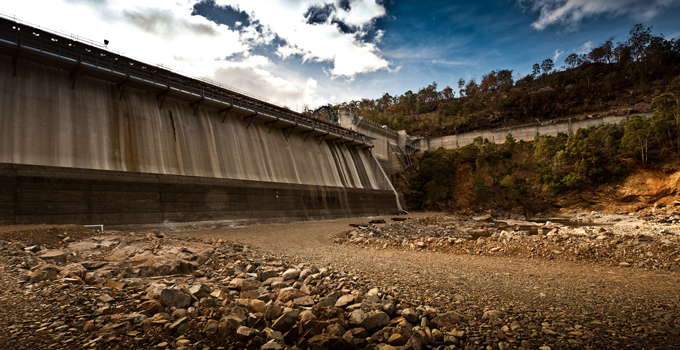
Around the world, businesses and communities face the many risks of climate change such as higher temperatures, changes in water availability and rainfall, more frequent and severe weather events. For power and water businesses, these may lead to major infrastructure damage and financial and environmental consequences.
In 2015 to 2016, these hypothetical risks became a challenging reality for Hydro Tasmania, Australia’s largest renewable energy producer and water manager. Hydro Tasmania faced unprecedented extreme weather conditions from September 2015 to June 2016 – and managed to come through the crisis while still safeguarding Tasmania’s ongoing access to high-quality, reliable water and power, and limiting environmental consequences and asset damage.
Entura supported Hydro Tasmania’s response to this major climate-related challenge through a range of earlier best-practice resilience-building measures, and significant interventions across a range of areas during the crisis itself.
What happened in 2015-2016?
Although Hydro Tasmania had experienced some variability in the past in Tasmania’s climate patterns, and despite understanding the risk of increasing future climate variability, the extreme dry conditions of September 2015 to April 2016 were unseasonal, unexpected and unprecedented. In Tasmania, summer inflows are traditionally low, but in this case, the usually dry summer was preceded by record-low spring inflows. Below-average rainfall across both spring and summer was the lowest recorded in 50 years.
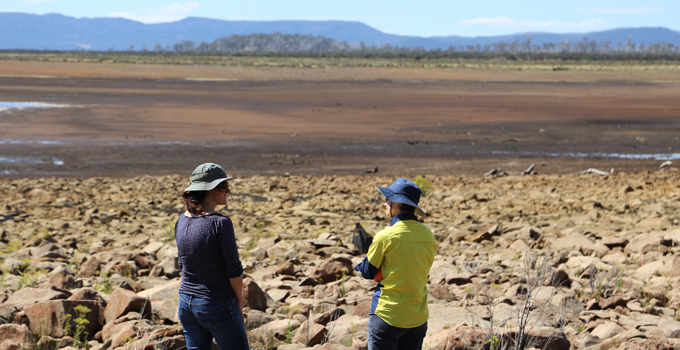
In normal operating conditions, low inflows could have been mitigated by importing power from mainland Australia across the undersea interconnector cable, Basslink, so that storages could be maintained. Yet, in another unprecedented scenario, in December 2015 the Basslink interconnector became inoperable just as summer arrived. Hydro Tasmania was now no longer connected to Australia’s national electricity market and many months remained before expected autumn/winter rains.
By late April 2016, Hydro Tasmania was experiencing its lowest storage levels ever, down to 12.5% total energy in storage, and serious environmental risks were emerging in some of its sites.
To compound the challenges, in January and February 2016 at least 70 separate fires were listed in Tasmania’s north-west, west, south-west and central highlands.
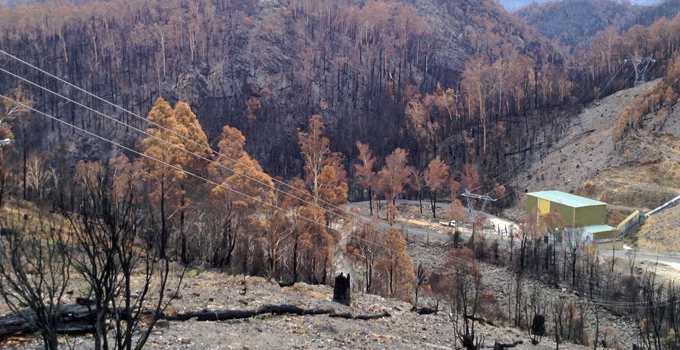
These extraordinary circumstances combined to present Hydro Tasmania with a major operational challenge. How could it keep the lights on and keep businesses operating in Tasmania while also protecting the environmental values associated with water storages and preserving the condition of its assets?
When the drought broke, conditions shifted from one extreme to another. Floods in June 2016 in northern Tasmania hit historic highs, exceeding all previous flood records in many locations. Several river-level measurement stations experienced the highest water levels on record.
How was the crisis managed?
Hydro Tasmania’s climate resilience and risk management strategies were called into action. Entura actively supported Hydro Tasmania through the energy supply challenge across a range of measures.
Generation planning and supply
To maintain adequate power supply, Hydro Tasmania drew on generation modelling and planning based on rainfall forecasts, climate model outlooks, and known and predicted electricity demand.
Voluntary reductions in major industrial loads were negotiated, and actions were taken to assess and instigate alternative generation options, such as restoring gas generation and implementing 200 MW of temporary diesel generation to bolster power generation. Entura assisted Hydro Tasmania to identify and assess feasible generation options and sites, and to progress these options through approvals and into operation.
Through these integrated and rapidly executed measures, Hydro Tasmania was able to maintain electricity supply for Tasmania without any outages for domestic users.
Environmental management and multiple water use
Another critical aspect of the successful result drew on Entura’s expertise in environmental management. Environmental impacts were monitored throughout the crisis. Lake-level risk bands were reassessed to better protect water quality and threatened species and to limit the long-term impacts on environmental values.
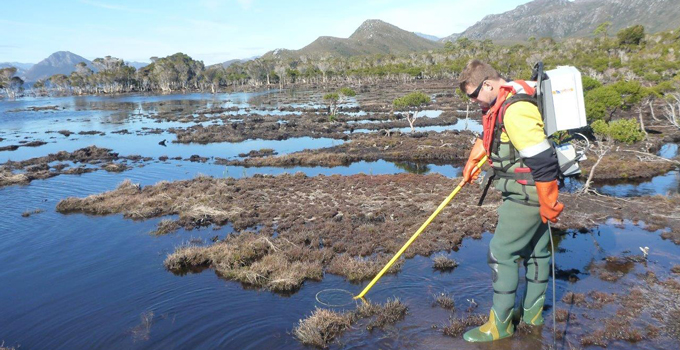
Water management also considered and mitigated impacts on other water users, such as boating, recreational fishing and water supply.
Bushfire management
The bushfires experienced across the state during the summer period did not adversely affect Tasmania’s energy security, as Bushfire Preparedness Fire Management Plans were already in place, and were activated to protect individual power stations and key assets through fuel reduction and other measures.
Dam safety and monitoring
Despite the extreme flood conditions, dams and spillways operated well within their design parameters, indicating that Hydro Tasmania’s ongoing dam monitoring and dam safety systems were robust. Safety inspections after the floods found only minor damage to non-critical elements of some dams.
During the high rainfall conditions, monitoring of dams and waterways provided alerts to downstream communities.
Road and asset management
Another consequence of the flooding was damage to some of Hydro Tasmania’s secondary assets (roads, canals) due to landslips, and the loss of some river-flow monitoring sites. Entura assisted with assessment and rectification of this damage.
Success drew on prior climate-resilience preparation
Ultimately, the example of Hydro Tasmania demonstrates climate resilience in practice. It shows how an investment in climate resilience enables a power and water business to be better prepared, more flexible and more robust in the face of a climate ‘shock’.
Hydro Tasmania’s management of the crisis required a comprehensive understanding of Tasmania’s climate and catchments. Entura’s involvement in 2007 in developing a Climate Change Response Strategy had provided a basis for this understanding, and a crucial input into identifying the risks and opportunities stemming from climate change.

Further inputs for climate resilience came through the collaboration in 2008 to 2010 between Entura and the CSIRO (Australia’s national scientific research organisation) on the first fine-scale climate and river system modelling for Tasmania, through the Climate Futures for Tasmania and the Tasmania Sustainable Yields projects.
The results of that research were state-of-the-art regional climate modelling and hydrological models to project future catchment yields for Tasmania. The modelling indicated that under climate change Tasmania could expect gradual temperature rises, changes in rainfall patterns over coastal regions, reduced rainfall over central Tasmania, changes to run-off patterns, and changes to the frequency and severity of extreme weather events including increased rainfall intensity and floods.
This modelling was critical in enabling Hydro Tasmania to plan and balance generation and storage levels over a range of demand and inflow scenarios and to assess environmental impacts during the extended period of drought.
Another key aspect of managing the energy supply challenges through the drought involved setting up supplementary diesel generation. This drew on Entura’s expertise and extensive involvement in developing hybrid off-grid renewable energy systems.
Hydro Tasmania’s climate resilience also involved being prepared for the drought to break. Key contributions from Entura included flood forecasting and flood support systems, ongoing support of Hydro Tasmania’s dam safety and emergency planning programs, and prior involvement in upgrading dams and designing spillways to withstand predicted increases in the frequency and magnitude of floods.
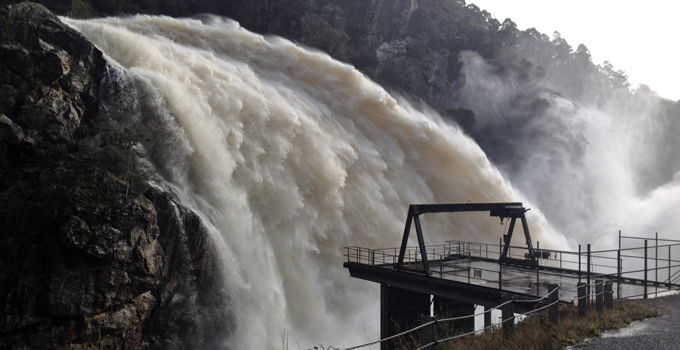
Entura also supported Hydro Tasmania’s procedures and ongoing activities to manage the secondary impacts of the fires and floods (such as damage to infrastructure), as well as the risks posed by low lake levels to social and environmental values. Entura’s environmental scientists monitored threats to aquatic flora and fauna through the 2015/16 crisis. To ensure the least likelihood of long-term or irreversible environmental damage, Hydro Tasmania’s environmental risk bands were revised.
Investing in your climate resilience
Any proactive and sustainable power or water business needs to invest in understanding the range, likelihood and consequences of the potential impacts of climate change for their current and planned systems and operations – whether for hydropower, transmission, dams, irrigation or water supply – and how to avoid or mitigate the impacts.
The more businesses understand the potential impacts of climate change and risks to their projects and operations, the better they can prepare, adapt, and build resilience to climate change impacts.
If you would like to learn more about building greater climate resilience into your project or operations, please contact Dr Eleni Taylor-Wood on +61 3 6245 4582, Phillip Ellerton on +61 439 010 172 or Shekhar Prince on +61 412 402 110.
About the authors
Tammy Chu is the Managing Director of Entura, one of the world’s most experienced specialist power and water consulting firms. She is responsible for Entura’s business strategy, performance and services to clients, and is part of Hydro Tasmania’s Leadership Group. As a civil engineer, Tammy specialised in the design and construction of mini-hydro and hydropower systems, project management, hydropower investigations, prefeasibility and feasibility studies, environmental assessments and approvals, resource investigations and resource water management. Tammy is a member of the Board of the International Hydropower Association. She was the first female and now past president of the Tasmanian Division of Engineers Australia, and was an Engineers Australia National Congress representative.
Dr Eleni Taylor-Wood is Entura’s Principal Consultant, Environmental and Social Science. Eleni has more than 20 years’ experience successfully managing large-scale, complex projects that run over several years, as well as providing expert advice and independent review for a range of infrastructure and planning projects. She has worked on projects around the world including in Australia, Mozambique, South Africa, Iceland, Colombia, India, Malaysia, Mekong, Solomon Islands, Fiji and Papua New Guinea. Her experience covers a vast gamut of studies including: environmental and social impact assessment and management; strategic management of wetlands and waterway; feasibility and approvals for new hydropower projects, environmental flow determination and assessment, and sustainability assessments. Eleni is currently one of eleven Accredited Assessors under the Hydropower Sustainability Assessment Protocol worldwide.
MORE THOUGHT LEADERSHIP ARTICLES
Keeping safe around dams
When we hear ‘dam’ and ‘safety’ in the same sentence, it’s natural to think first of catastrophic dam failures and their devastating impacts on downstream communities. However, keeping the public safe around dams also involves considering and mitigating some more common and less documented risks…
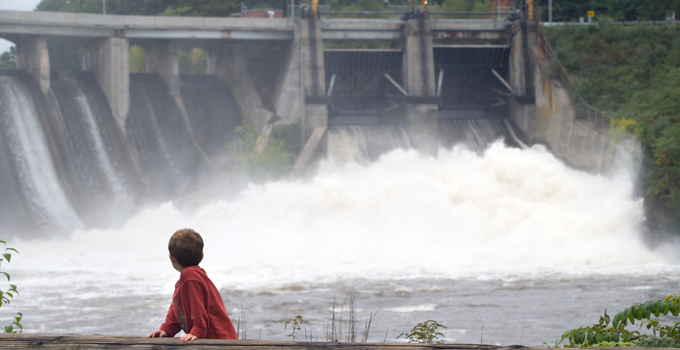
Dams, water courses and water bodies typically offer a range of recreational benefits enjoyed by many. But where there’s water, there’s inherent danger, including the risk of drowning.
Asset managers know much more about the numbers of fatalities relating to dam failures than about the fatalities associated with the overall ongoing presence and operation of dams. But we do know that drownings in dams and waterways make up more than a third of total drowning statistics in Australia, and the situation is similar around the world.
Regardless of the specific circumstances of each of these fatalities, it is clear that owners and regulators of dams and water courses need to take action to help protect the public from these largely avoidable deaths.
In 2012 the International Committee on Large Dams established a working committee to start identifying these public safety risks, describe the international state of practice to manage and mitigate the risks, and develop a guidance bulletin on best practice measures and public education about safety around dams. This project is well underway, and here I’ll take a look at some of the key risks and possible mitigations being considered.
WHAT ARE THE RISKS?
The general public tends to underestimate the hazards linked to activities around dams and waterways, particularly the possibility and effects of sudden changes in water level and flow.
Accidents may happen around dams and water bodies during a range of activities – not only those considered more overtly dangerous (such as abseiling or rock climbing), but also during activities such as swimming, kayaking, boating or fishing. Falls from heights and other activities not associated with access to water are also of concern.
However, many drownings are due to the particular risks relating to hydraulic structures and the inherent nature of their operation, and to rapid changes in water levels and conditions.
Hazards around dams are often associated with swift and turbulent currents near intakes and spillways. These currents may be created by the changes in flows and water levels during normal operations of spillways or during flooding. Unexpected rapidly rising water levels can result from weather conditions, but also from sudden changes in output from hydropower stations, and have the potential to cause people to be inundated or swept away.
Around the world, a large proportion of drownings have been associated with a particular subset of hydraulic structures referred to as ‘low-head weirs’. Under certain flow conditions, these can display a particularly dangerous hydraulic phenomenon, earning them a common description as ‘drowning machines’. This type of structure has particularly attracted attention, and has been investigated, in the United States as it constitutes a large proportion of preventable death in a number of states.
WHAT CAN DAM OWNERS DO?
Where people are undertaking recreational activities with a recognised level of risk, there is an implied responsibility to observe regulations and warnings, take common safety precautions, and be capable and in a suitable state to undertake the activity.
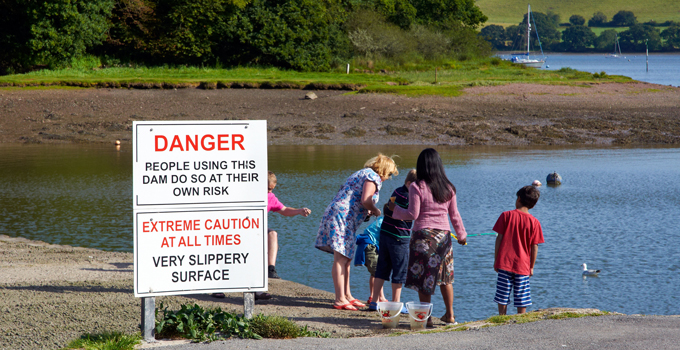
However, the absence of such behaviours does not remove the liability of the asset owner or manager. In fact, their responsibility is even higher in inherently hazardous site conditions, conditions posing a hazard that is not readily identifiable, or where changes in operations lead to changes in the hazard level.
So, what actions should a dam owner or manager take to best protect the public? While not all incidents can be avoided, the possible actions below form a comprehensive approach to minimising risk and reducing probability and consequences.
| Develop a public safety policy and plans, ensuring compliance with laws and regulations |
Start by documenting your commitment to public safety in a policy statement identifying your statutory and legal requirements, and establishing your objectives, tolerance criteria and targets. Translate your policy into a public safety management plan indicating how you will manage the public safety risk at each site. This should be based on a risk assessment of the facility, identifying the hazards, assessing the degree to which the public is exposed, identifying appropriate control measures and assigning responsibilities. |
| Conduct a risk assessment, incorporating comprehensive local insight and regular review |
The risk assessment process is an important step in managing public safety risk as well as complying with statutory and common law obligations. It helps focus on the risks that really matter. Most organisations have an accepted method for analysing, assessing and managing risk; this may be tailored to incorporate public safety risks. Consider such factors as seasonal and daily weather effects. For example, during summer, or other periods of low flow, the public may anticipate a lower likelihood of rapidly changing conditions. There may also be a general lack of awareness that spills can result from other factors than adverse weather, such as changes in generation or earlier precipitation upstream. The quality of the risk assessment and the effectiveness of control measures depend on the degree of site-specific knowledge which is best obtained from staff working at the location or engaged in its operation. The risk assessment should be periodically reviewed to ensure the assumptions remain valid. |
| Exclude the public where necessary through fencing, gates, artificial and natural barriers |
The selection of exclusion devices and layout depends on the particular site and requires input from people with a good local understanding. Note that the effectiveness of public exclusions can vary over time as usage of an area changes or as the public becomes complacent or desensitised to the hazards. |
|
Warn the public of dangers and of changed conditions through signage and other audible and visual alarms
|
Signage and alarms warn of changes in operations (e.g. gate opening) and conditions (e.g. water level or flow). Carefully consider their placement, maintenance, language, readability, and use of terms and symbols. In some circumstances, audible and visual alarms may be appropriate. As with physical barriers, over time the effectiveness of warnings may diminish, particularly if there is a real or perceived lack of connection between the activation of the warning and the occurrence of the hazard. |
|
Educate targeted populations and the general public
|
Best practice suggests that education applied well either via mass media or to targeted populations can have a significant impact. |
| Train supervisory personnel, including in intervention and rescue techniques and incident management |
Training supervisory personnel in hazard identification, risk assessment, compliance assessment and enforcement is important. This can include specific training and simulations in intervention and rescue techniques where appropriate. Many dam owners are reducing the site presence needed to meet operational requirements; but determining the appropriate presence required should take account of the need to maintain a public profile and awareness of public interaction. Periodic patrols are also valuable to identify changed patterns of public use. A public safety incident may be managed by local intervention or could escalate into an emergency, crisis or disaster for an operator depending on the nature and scale of the incident. Effective incident management must go beyond the immediate need to contain the incident (e.g. perform a rescue), by also considering the implications for risk assessment, education, and the return to business operations. |
| Decommission the dam where appropriate | In some circumstances, decommissioning may be an appropriate method to reduce risk. Public safety may add weight to a decision based on other business or operational considerations. |
| Monitor, report and review |
Incident reporting relating to public safety around dams is often poorly undertaken and lacking sufficient detail. There are also very few reports of near misses, which can provide important lessons about mitigating risks, and very limited databases or documented case studies available. To improve this situation, the forthcoming guideline from the ICOLD committee will propose an incident reporting process that can be applied by owners and regulators to improve their practices regarding public safety around dams. |
The ICOLD bulletin will form a valuable tool for owners, operators and regulators to manage and mitigate this significant risk area. A good way to start the process is by seeking the assistance of others who have experience in assessing and managing the public interaction with dam and waterway assets.
Every life lost in a dam-related accident is a tragedy. Through these best practice measures, dam owners and managers have a much greater opportunity to help reduce the many hundreds of dam-related fatalities occurring around the world each year.
If you would like to find out more about how Entura can help you improve safety around dams, please contact Phillip Ellerton on +61 439 010 172 or Shekhar Prince on +61 412 402 110.
MORE THOUGHT LEADERSHIP ARTICLES
Batteries vs pumped hydro – a place for both?
Two very different storage technologies – one old, one new; one that takes years to build, one that can be built ‘within 100 days (or it’s free)’. How else do they differ, and is there a place for both?
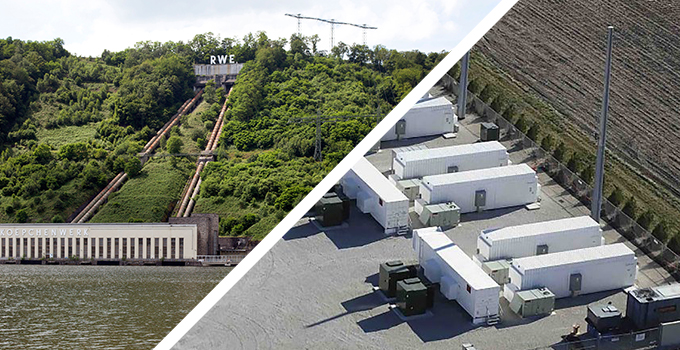
The rapid growth of renewable energy generation has been driven by two concurrent factors: the falling levelised cost of the energy produced by wind and solar, and the retirement of a number of coal-fired power stations. The recently released Finkel Review notes that by 2035, approximately 68 per cent of the current fleet of Australian coal generating plants will have reached 50 years of age.
The Clean Energy Target proposed by Dr Finkel is not yet confirmed but it recommends incentives for technologies with low or zero carbon emissions. More renewable energy generation brings new challenges in an increasingly complex grid. Dr Finkel therefore also proposes that energy storage be mandated for solar and wind farms.
Renewables can’t, on their own, meet the fluctuations in demand that occur throughout the day without some regulation as to when power reaches the grid. Power needs to be dispatchable. Dispatchable means that energy can be provided upon request. If the sun is not shining or the wind is not blowing, renewable energy cannot be dispatched unless it has been stored in some way.
There are a number of different types of storage but the two being discussed most widely right now are batteries and pumped hydro energy storage. These two technologies are very different and there are some limitations involved in comparing a well-known and established technology with one that is new and developing rapidly.
How do they support the network?
Pumped hydro is based on well-established synchronous generation, providing critical ancillary services to the grid, through the provision of inertia, frequency and voltage support and sufficient fault level support.
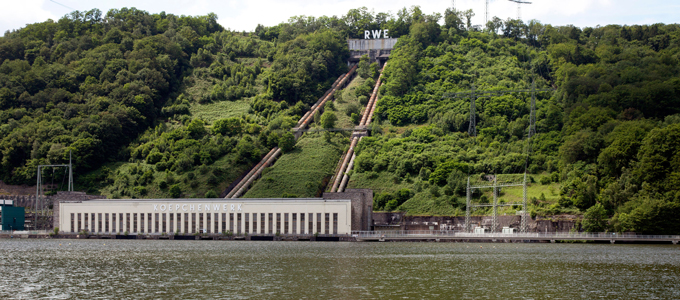
Battery inverter technologies are still catching up on most of these fronts. The potential for batteries to provide ‘synthetic inertia’ or fast frequency response is high but this is balanced by their reliance on system strength to be able to deliver this support. They offer minimal support with fault levels but can still provide some support to system frequency and voltage regulation.
How fast can they happen?
There’s no doubt that battery storage is quicker to implement than pumped hydro. South Australia has provided an example of just how quickly battery storage can be deployed.
In March 2017, the South Australian Government called for expressions of interest for the supply of grid-connected battery storage to be connected by the end of 2017. The overwhelming response from 90 interested parties tells us that this speed of deployment is within the realms of possibility.
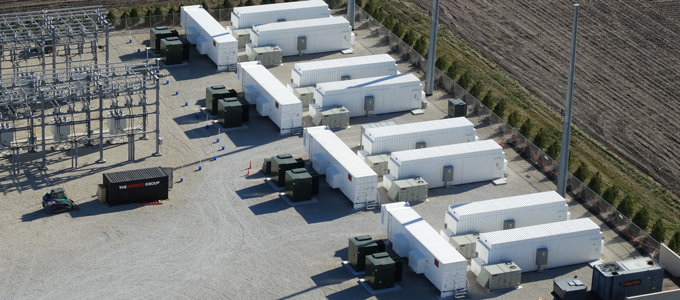
Battery image courtesy of Greensmith, a Wärtsilä Energy Solutions company.
Pumped hydro, by comparison, is a technology that takes much longer to implement. Typically, development activities (including optimising the technical solution, environmental and social assessments, arranging finance and finalising design) take two years or more to complete, and construction takes another two to three years.
How do the capital costs compare?
Pumped hydro boasts a very low price per megawatt hour, ranging from about $200/MWh to $260/MWh. Currently, battery costs range from $350/MWh to nearly $1000/MWh, with this cost reducing rapidly (costs reduced by about 25% during 2016).
According to the Lazard’s Levelized Cost Of Storage report, capital costs for pumped storage projects around the world range from about $1.5 million to $2.5 million per MW installed. The report also reveals that the cost of installing a grid-scale battery solution ranges from about $3.5 million to $7.5 million. This wide range of pricing for batteries is typical of a developing technology that is implemented in a variety of applications.
Ultimately, it’s difficult to predict how low the cost of batteries may go, but reports predict costs of lithium-ion batteries at somewhere around $120/MWh by 2025.
Considering that batteries need to be replaced once or twice a decade, with the currently available technologies, a battery facility will need to be replaced a number of times during the potential 100-year life of a pumped storage project. For batteries, assuming an economic life of 40 years, the initial cost plus replacements may mean whole-of-life costs fall in the range of $200/MWh to $330/MWh.
So, what does the future hold?
The rise of renewables will inevitably lead to a diversity of storage and supply solutions. The range of these solutions will depend on the resources of particular regions and locations. It is highly likely that the future for both batteries and pumped storage technologies will be extremely bright.
Batteries are here to stay and will undoubtedly play a significant role in future power systems as the technology develops and costs fall. However, while batteries can provide fast response times, they are yet to demonstrate their ability to provide the full range of ancillary services needed to support the grid. Pumped hydro remains a landmark, proven and reliable technology, able to meet the needs of the grid and provide sustained output for up to a century.
Ultimately, there is room for both batteries and pumped storage hydro, and they may even complement each other. Batteries are more cost-effective at delivering small amounts of stored energy over a short time at high power levels. Pumped storage is more cost-effective at storing and releasing larger amounts of stored energy. Achieving the optimum storage solution will depend on careful planning and finding the best fit for the particular circumstances.
What is certain is that both technologies will play important roles in the development and expansion of a network powered by renewable energy.
If you would like to discuss how Entura can help you with your next utility-scale battery or pumped hydro project, please contact Donald Vaughan on +61 3 6245 4279 or Nick West on +61 408 952 315.
A version of this article was first published in RenewEconomy.
About the authors
Donald Vaughan is Entura’s Technical Director, Power. He has more than 25 years of experience providing advice on regulatory and technical requirements for generators, substations and transmission systems. Donald specialises in the performance of power systems. His experience with generating units, governors and excitation systems provides a helpful perspective on how the physical electrical network behaves and how it can support the transition to a high renewables environment.
Nick West is a civil engineer at Entura with 16 years of experience, primarily in hydraulics and hydropower. Nick’s skills range from the technical analysis of the layout of hydropower projects to the preparation of contractual project documents and computational hydraulic modelling. Nick was a key team member of the Kidston Pumped Storage Project Technical Feasibility Study.
MORE THOUGHT LEADERSHIP ARTICLES
More water storage needed for a sustainable future
Global declines in water storage are increasingly troubling. With greater hydrological variability due to climate change, more storage will be vital to provide the same level of security of water, food and energy.

Water storage is a fundamental protection from the impacts of a changing climate, safeguarding the supply of water, and the water–food–energy nexus, even during extended drought.
For thousands of years, dams have stored water to irrigate crops, control flooding, supply water for industrial and household use, and generate hydroelectric power – contributing enormously to food security, human development and economic growth.
These days, many dams serve more than one function, but remain the primary mechanism for coping with the variability of water supply and demand. During the last century, more than 45 000 dams higher than 15 m have been constructed worldwide, creating a combined storage capacity estimated to be between 6700 and 8000 km3, representing 17 per cent of global annual runoff.
Security of water, food and energy are inextricably linked. For example, approximately 50 per cent of all large dams worldwide are used for irrigation. Without sufficient water storage, irrigated agriculture (the largest user of water at the global level, contributing 40 per cent of the world’s food) is at the mercy of changing patterns of rainfall and runoff.
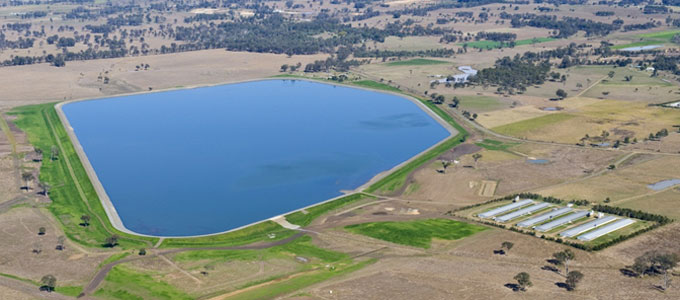
Understanding water storage issues is essential for successfully managing water resources. At the simplest level, it is a matter of ‘inflow (water supply) less outflow (water demand) equals change in storage’. But it is particularly important to understand whether storage declines relate to reducing supply, increasing demand, or both. The answer is both, and more.
Key factors influencing storage are greater variability of inflows due to climate change, increased demand due to population growth, reduced net storage due to sedimentation, and less dam construction occurring worldwide due to environmental and social impacts.
Climate change
The effects of climate change are predicted to increase and to result in greater magnitude and frequency of hydrological extremes, such as prolonged droughts and significant floods. With prolonged drought, inflows to storages will reduce. If demand remains the same, stress on existing water storages will increase.
Population growth
It is estimated that in 2017 Earth supports around 7.5 billion people, yet 200 years ago the number was less than 1 billion. Population and water demand are strongly linked. With our world population increasing at around 80 million people per year, rising demands for basic services and growing desires for higher living standards will intensify the demand for water and put additional strain on existing storages.
Sedimentation
Many of the larger reservoirs worldwide have had their lifespans reduced significantly due to deposits of sediment within the storages, diminishing net storage in many regions of the world. Globally, the annual rates of loss relative to installed storage capacity are generally estimated to range between 0.5 and 1.0 per cent, equating to a total worldwide loss of storage of around 40 to 80 km3 per year.
Reduced dam construction
Installation of large reservoirs peaked during the 1960s and 1970s, both in number and storage volume. However, some of these larger reservoirs caused significant environmental and social damage, bringing dam construction under great scrutiny and ultimately decreasing dam construction worldwide.
With less dam construction, some decommissioning of older dams and loss of storage due to sedimentation, net storage worldwide is falling, most dramatically in storage per capita. Such reduction in storage is likely to undermine reliability of supply.
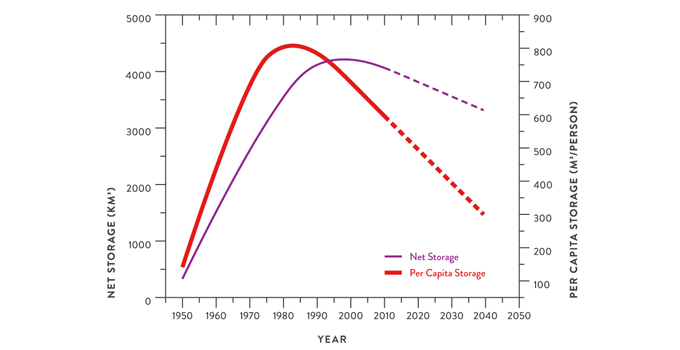
Source: GW Annandale, GI Morris & P. Karki, Sediment Management at Reservoirs and Hydropower Plants: New World Bank Technical Note, ICOLD International Symposium, Johannesburg, May 2016.
Few kinds of development projects arouse as much controversy as dams. However, large dams vary considerably in their environmental and social impacts. The severity of environmental impact is largely determined by the dam site. While dams at good sites can be very defensible from an environmental standpoint, those proposed at bad sites will be inherently problematic even if all feasible mitigation measures are properly implemented. The challenge is to find the good dam sites to enable these necessary water storages to be developed.
How can we take action?
The following actions form a useful response to reduced worldwide storage and the pressing need to increase water storage to maintain reliable water supply, irrigation and energy systems in a changing climate:
- Prioritise managing existing storages well, and recognise the importance of storages for maintaining reliable supply. Appropriately manage sedimentation and its impact. Employ near-real-time management of water based on improved information systems to ensure the best economic use of existing reservoirs.
- Explore opportunities to increase the storage capacity of existing reservoirs by raising dams or by improving interconnection. Often, this can be more cost-effective and have lower environmental impacts than a new dam project.
- Identify dam sites, either on-stream or off-stream, which will minimise environmental and social impacts. Good site selection is the most effective environmental mitigation measure.
The net decline in global reservoir storage demands a different mindset for analysing the economics and construction of sustainable dam projects. Rather than debating whether more dams are required, decision-makers must accept that more storage will be needed and should plan accordingly.
If you would like to find out more about how Entura can help you develop a sustainable water storage solution or respond to these worldwide challenges, contact Richard Herweynen on +61 3 6245 4130 or Shekhar Prince on +61 412 402 110.
A version of this article has been previously published in the International Hydropower Association blog.
About the author
Richard Herweynen is Entura’s Technical Director, Water. Richard has three decades of experience in dam and hydropower engineering, and has worked throughout the Indo-Pacific region on both dam and hydropower projects, covering all aspects including investigations, feasibility studies, detailed design, construction liaison, operation and maintenance and risk assessment for both new and existing projects. Richard has been part of a number of recent expert review panels for major water projects. He participated in the ANCOLD working group for concrete gravity dams and is the Chairman of the ICOLD technical committee on engineering activities in the planning process for water resources projects. Richard has won many engineering excellence and innovation awards (including Engineers Australia’s Professional Engineer of the Year 2012 – Tasmanian Division), and has published more than 30 technical papers on dam engineering.
MORE THOUGHT LEADERSHIP ARTICLES
Protecting your embedded generator from islanding without breaking the bank
If you are planning to generate some of your own electricity, such as through a few wind turbines or a small solar farm, you’ll need to know about islanding.
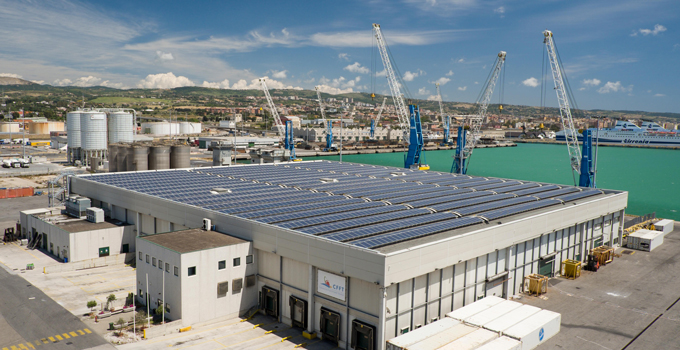
Adding new embedded generation such as wind or solar into the power grid can produce some challenges, but these challenges can be overcome. One such concern is the potential for network faults to cause islanding – in other words, when an embedded generator keeps supplying power to a grid when the grid power falls or fails, forming an island.
Understanding the cost implications of anti-islanding protection will help you negotiate with your network service provider, and may help you save money on a fit-for-purpose solution.
Network service providers (NSPs) are particularly sensitive to the risk of islanding. Although the probability of an island developing is low, the potential for islanding causes NSPs concerns about safety, about delivery of poor-quality electricity, and about the chance of damage to their equipment.
However, the high costs of some anti-islanding measures could cripple your embedded generation project, so you need to be aware of your options.
How can islanding be detected?
To protect against islanding, many NSPs will install high-speed communications circuits between your new plant and their substation or control centre. This works well: the NSP determines that an island may be forming and sends a trip signal to your generator. However, the communications circuit is expensive and, typically, the cost will come out of your pocket. The extra expense might spell the end for your power project, regardless of its size.
In the future, the gold standard in anti-islanding protection is likely to be based on synchrophasors, so that the phase angle of various parts of the grid can be compared and a tripping decision can be made without involving the NSP control centre. This method will still require high-speed communications circuits.
It is common for proponents to consider ‘passive’ anti-islanding protection based on measurements made at the generator. The usual measurements made to detect islanding are over/under voltage, over/under frequency, rate of change of frequency, and vector shift. The NSP is likely to ask what will happen if the island load matches the island generation. In a purely academic sense, if the load matches the generation then none of these elements will detect the island. But is this concern warranted in practice?
The bigger risk you will face, particularly in off-grid networks, is that the rate of change of frequency or the vector shift will trip your generator unnecessarily. It is very difficult to set vector shift protection sensitively enough that it will detect an island but not malfunction during a network fault.
What’s the best option?
If you are connecting an inverter-based system (e.g. a solar farm or a type 4 wind turbine) make sure that it has ‘active’ anti-islanding protection and that the inverter documentation discloses the method being used. In Australia, simply specifying compliance with the standard AS 4777 is sufficient.
Specialist advice on how the active anti-islanding protection operates will help you and your NSP determine whether you can avoid the need for high-speed communications and use a lower cost communications circuit such as 3G.
If you are connecting an induction generator, you might think that it is not possible to supply an islanded load. It is not impossible, just unlikely. Your NSP may not accept unlikely, when you could install a high-speed communication circuit and eliminate the risk at no additional expense to them.
Although an induction generator can sometimes supply an islanded load, it is almost impossible for it to do that at nominal voltage and frequency. Passive protections can be applied and are likely to work reliably. The rate of change of frequency protection is particularly useful in this case because, unlike vector shift, it is not susceptible to network faults as long as you select a relay with the right algorithm.
If you are connecting a synchronous machine, you’re providing valued inertia, but you may have the largest anti-islanding challenge. The synchronous generator can supply an island indefinitely and often without going far outside the nominal system voltage and frequency.
In this situation, there are three alternatives:
- You could attempt to convince your NSP that the power you provide to any island will be of the highest quality and that there is no need to panic if an island is created for a short time. The NSP will likely ask you to fund the installation of one or more new voltage transformers in their network.
- You could accept that high-speed communications really are required to safely incorporate your new generator into the network, and shoulder the expense.
- You could apply vector shift protection to your generator and accept that there will be occasional instances in which your machine will trip off and need to be restarted following a network fault.
Anti-islanding protection is complex, and it adds an extra hurdle in the process of embedding small generators in our networks, but this challenge can be resolved satisfactorily. By being better aware of your options, you’ll be much more likely to achieve a safe and cost-effective solution that meets your needs as well as the requirements of your NSP.
If you would like to find out more about how Entura can help you overcome islanding and other electrical challenges, please contact David Wilkey on +61 3 6828 9749 or Patrick Pease.
About the author
David Wilkey is Entura’s Principal Consultant, Secondary Electrical Engineering. He has more than 20 years of consulting experience in electrical engineering across Australia and New Zealand, focusing on the delivery of advisory on secondary systems and power systems engineering. David’s expertise spans all areas of electrical engineering with a particular focus on electrical protection, power system studies and rotating electrical machines.
MORE THOUGHT LEADERSHIP ARTICLES
Following the money: financing your solar farm
The potential for successful large-scale solar in Australia is enormous, but problems with financing can spell death for your project.
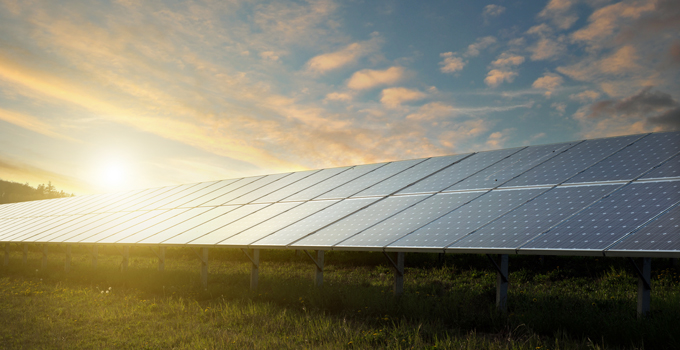
In this final part of our series of articles on overcoming potential roadblocks to solar developments, we take a closer look at some key risks often scrutinised by lenders and investors for utility-scale solar PV projects.
Energy yield
It is important to engage a third-party consultant to carry out a bankable energy yield assessment for your solar PV project. This is required by project lenders, but is also useful for internal purposes, and for any future discussions with all the project stakeholders.
To begin with, it is critical that the solar resource data appropriately represents the project site. An on-site measurement campaign using high-quality instruments for at least 12 months is recommended to capture the complete seasonal pattern, which can then be correlated with a long-term data set. If such on-site measurement is not available, using and cross-checking several high-quality satellite data sets from reputable data suppliers can be acceptable, though will increase risk and uncertainty.
Energy modelling needs to be in line with the actual design of the project. Make sure that the equipment input files for the modelling software are properly checked and supported by actual data. Transparency in these inputs means increased certainty in the energy yield results.
Degradation of PV modules is a contentious subject, and of concern to lenders and investors. For solar PV projects financed in Australia, the degradation assumptions (in the system level) are in the range of 0.5% to 1%, which is supported by a body of recognised studies. Lenders may request supporting information to justify lower-end degradation numbers.
In addition to total energy yield, the generation profile over the year is increasingly important in estimating revenue and securing power purchase agreements, and thus needs to be estimated accurately. Combining your solar PV plant with battery storage can offer further unique advantages to optimise revenue and minimise connection costs. However, battery storage adds another layer of analysis to estimate the final generation profile and the additional energy losses based on the specific battery technology and control strategy.
Uncertainties
Uncertainty analysis is a crucial element of any bankable energy yield assessment as lenders and investors need to look at the project’s downside energy production scenarios at different time scales. It is not uncommon for banks to finance a renewable project using a conservative scenario.
The uncertainty of the energy yield assessment may dictate the debt sizing, or influence credit ratings for the project, so it is critical to fully understand the project’s resource uncertainties.
The main uncertainty that opens up downside energy production scenarios is the solar resource. A rigorous resource assessment is likely to considerably improve the financing conditions for your project. Other inputs and parameters used in the analysis can also introduce uncertainty and must be well supported and justifiable, rather than pragmatically assumed.
Offtake Agreements
Offtake risk is another key element considered by financiers. Projects without power purchase agreements (PPAs) may struggle to obtain project finance or receive unfavourable financing terms. Only enter into PPAs with creditworthy counterparties with investment grade ratings.
Lenders ideally want PPAs with at least the same duration as the loan tenor, e.g. 15 years.
Entering into long-term PPAs directly with corporate offtakers is increasingly popular globally as large companies convert to 100% renewables. Although not common in the Australian market, corporate PPAs do offer an attractive solution for future renewable projects in effectively mitigating offtake risk.
Technology
To date, few large-scale solar PV plants are operating in Australia. It is possible that your project will be proposed with PV module products yet to achieve a track record for utility-scale solar farms, so how can you offer project lenders confidence in the capability and reliability of the proposed technology?
Engage in conversations with module suppliers early and ask for relevant documentation, such as third-party bankability assessments and accelerated test results with recognised solar PV testing institutes. Absence of information must result in conservative assumptions for financing purposes, so efforts to extract and justify all parameters is typically well worthwhile.
It is also important to know, and to contractually specify, the specific bill of materials intended to be used by the module manufacturer, as different materials can vary performance.
Contractual terms
A good construction and maintenance contract can help you obtain favourable financing terms. For example, it is important to ensure that your EPC contract has well-defined principal’s requirements and technical specifications, with no exclusions in the scope of works or technical specifications that could result in significant cost variations incurred by the owner. Also, be sure that the operations and maintenance (O&M) scope is sufficiently thorough and aligned with the energy yield estimate, and be sure to budget for any out-of-scope O&M task particularly in regards to inverter maintenance.
Set out a rigorous yet reasonable testing scheme for final completion to ensure the quality and capability of the PV plant to deliver the estimated energy output. It is also advised that the guaranteed plant performance is in line with the energy yield assessment. A good contract also properly addresses the multi-year energy guarantee regime and associated liquidated damages scheme to good industry practice.
From a lender’s perspective, ideally you would want an O&M agreement with a contract duration to at least match the loan tenor, and with an all-inclusive thoroughly specified scope of services covering both preventative and corrective maintenance. This should ensure minimal out-of-scope O&M costs for the owner. A maintenance reserve account is typically required by the lender to manage any cost items not covered by the existing O&M agreement during the loan tenor (e.g. inverter refurbishment/repair/replacement).
Alternative Financing Solutions
The investment landscape is changing, and traditional project finance may not always be your best option. For example, for relatively small solar PV projects, project finance is often not cost-effective and transaction costs can be significant.
Green Bonds offer another solution for financing or refinancing of renewable energy projects. Green Bonds are any type of bond instrument used to finance or refinance eligible ‘Green Projects’. As the size of the global bond market is US$ 100 trillion, tapping into such a pool of funds will undoubtedly help to drive the renewable finance landscape in Australia. However, the Green Bond market is not accessible to all developers – and will typically require a significant transaction size (typically US$100 million or more), and specialised expertise.
For smaller developers and projects, depending on the size, solar PV projects may be aggregated and funded on balance sheet, for example via a corporate facility, or with pure equity. Technical due diligence for projects financed in this way would still be required (particularly if planning to sell the projects once operational), and the overall key risk elements would be the same as for traditional project finance, although the scope of works required for due diligence may be reduced. Standardisation across smaller projects – for example, in configuration, energy yield analysis, equipment and contractor selection, and key contracts – is crucial for keeping transaction costs down in smaller projects.
When you can offer an investor confidence that your project has adequately considered and planned for all potential risks, achieving favourable and secure finance doesn’t have to be a roadblock to solar success.
If you would like to find out more about how Entura can help you overcome financing hurdles for your solar development, contact Silke Schwartz on +61 407 886 872 or Patrick Pease.
MORE THOUGHT LEADERSHIP ARTICLES
Connecting renewables in a changing grid
As the network continues to incorporate increasing levels of inverter-based asynchronous generation such as wind and solar, connection standards in the weakening grid are tighter than ever before.

Successful grid connection is a key factor in the ability of generating plant to operate effectively and reliably , and it does not need to be a roadblock to the roll-out of new renewable generation. But connecting new solar and wind generation into a weakening transmission system can involve challenging grid connection requirements, particularly at periods of low demand.
Network faults can cause potential imbalances between network segments, and these imbalances may be exacerbated by fault ride-through (FRT) algorithms.
We have written previously that it may not be easy to understand the worst case from a system fault perspective. So we need to consider a wide range of system scenarios in combination with a broad spectrum of contingency events.
A number of factors are at play here, but we will focus particularly on the effect of FRT algorithms on the transient stability of the network.
When considering the connection, we tend to focus first on the stability at the connection point. This can lead to reducing the aggressiveness of the FRT algorithm to ensure FRT re-strikes are not caused by the power ramping back too quickly.
But this is where the seeds of the problem are sown. The weak voltage support at the point of connection leads us to withhold power longer during FRT to give voltage controls (remote or local) a chance to work immediately after fault clearance. In a stronger grid (even if we’re on a weak connection) this power deficit is not significant, but it can be crippling in a weak grid.
A fault forms two islands (momentarily). These two islands will invariably be unbalanced internally. That is, there will be a surplus of generation in one island and a surplus of load in the other. One island will then speed up and the other will slow down. If our inverter-based generator is in the island that is slowing down, then the withdrawal of energy by FRT makes the energy deficit in that island worse.
When the fault clears, the two islands need to re-establish synchronism. If the two islands have diverged then they may not be able to snap back to synchronism. This may lead to system separation and possible load shedding or worse.
What can be done when this occurs?
If a new connection runs into this problem as part of the connection studies, it may be able to get around it by tweaking the FRT controls. Setting these to return to normal control as fast as possible and to minimise the depth of power withdrawal during FRT will weaken the effect. Installing synchronous condensors may be another way to improve Short Circuit Ratio (SCR) at the connection point. This should allow more aggressive return from FRT.
On a network level, stronger interconnection and meshing should reduce the locations where faults can actually form the islands we’ve described here. This solution is possibly expensive, but network capability is currently the missing link in our Rules.
This is the problem we face as we move closer to the edge of the technical envelope. The capability of the network is not and has never been defined by the transmission elements alone. We’ve had generating units that have provided voltage and frequency stability. Now, those generating units are being displaced by wind and solar sources that do not provide the same levels of grid support.
This is where the interpretation of the Rules is going to be a threat to further renewable penetration. When assessing a new connection we routinely look for dispatch scenarios that will test the limits of grid strength. If the new connection can’t meet an appropriate standard of performance, we determine that it is this new connection that is at fault. Sometimes this is true, but sometimes it’s just that connections that came before have soaked up the available system strength.
On one level, this is an appropriate response. The new connection should not be allowed to connect if it can’t meet an acceptable negotiated level below the automatic access standard. On the other hand, it seems that the network resource is not being equitably shared. That is, people ahead in the queue have been given more than what we now understand to be a fair share.
We’re not suggesting a reallocation of those shares. That’s impractical. Nor are we suggesting that earlier connection agreements were ill-advised. We, as an industry, just know more now about how valuable and scarce network strength can be.
How will this affect future connections?
Ultimately we need a reasonable approach to negotiated access standards. Perhaps there’s a need for an adjustment to minimum access standards too. It is not practical or fair to expect that that burden be shouldered by new connections alone. Nor is it practical or fair to renegotiate the connection standards of existing plants. If we are to continue to add non-synchronous generation, we will need alternative sources of grid strength.
If you would like to find out more about how Entura can help you overcome grid connection challenges when developing your solar farm, please contact Donald Vaughan on +61 3 6245 4279 or Ranjith Perera on +61 3 6245 4272.
About the authors
Donald Vaughan is Entura’s Technical Director, Power. He has more than 25 years of experience providing advice on regulatory and technical requirements for generators, substations and transmission systems. Donald specialises in the performance of power systems. His experience with generating units, governors and excitation systems provides a helpful perspective on how the physical electrical network behaves and how it can support the transition to a high renewables environment.
Ranjith Perera is a Specialist Power Systems Engineer at Entura. He has over 22 years of experience in Australia and South-East Asia, working on customer and generation connections and broader power system analysis. Ranjith has provided power system advice on a wide range of network augmentations, network planning and system stability in Australia and internationally. These studies included option analysis in transmission planning, constraint analysis, determination of reactive support (dynamic or static) in system stability / TOV and detail load modelling in voltage stability. Ranjith also developed voltage recovery guidelines to TNSP based on regulatory requirement and customer equipment tolerances.
MORE THOUGHT LEADERSHIP ARTICLES
Shifting directions for hydropower in Asia-Pacific
The issues and trends we’re seeing playing out right now relating to hydropower and the clean energy sector are not unique to our region.
Having recently returned from a meeting of the Board of the International Hydropower Association, I’ve been reflecting on the challenges and opportunities facing the global hydropower sector.
It seems that there’s a global shift occurring in hydropower. Traditionally, hydropower has been viewed as a stand-alone, established renewable technology. Now we’re seeing a much greater sense of integration with other renewable technologies as part of broader ‘clean energy’ systems. With the rapid global increase of wind and solar power developments, hydropower needs to review its place, and its opportunities, within the wider energy sector.
Wind and solar tend to have shorter construction and implementation periods than hydropower projects. When the wind is blowing and the sun is shining, the power flows. But, as we know, the intermittency of these sources of power creates the need for some sort of storage to firm up the system.
Hydropower has traditionally provided both baseload and peaking capacity, but now we also have the opportunity to provide much-needed storage and the firming capacity urgently required to help stabilise grids as they integrate increasing levels of intermittent renewable technologies. Pumped storage hydropower may be particularly useful in this context.
In recent weeks the Australian federal government has expressed new interest in pumped storage options to help alleviate grid pressures, such as those experienced recently in South Australia. But it’s not only in Australia that we’re seeing increased discussion and enthusiasm about opportunities for pumped storage hydropower to integrate with other intermittent renewable technologies by offer firming power and assistance with stabilising the grid. It’s a global trend.
Also under discussion at a policy level in Australia right now is the energy ‘trilemma’ of security, equity (accessibility and affordability) and environmental sustainability. These three factors need to be in balance to ensure a secure power sector that meets the present and future needs of energy consumers while moving towards a lower carbon future. These three big issues that are so relevant right now in the Australian context are just as urgent in the global setting too, and need careful long-term planning, and the right mechanisms in place to support appropriate development.
It is interesting to review the World Energy Council Energy Trilemma Index, noting country rankings through the lens of hydropower and pumped storage integration. Not surprisingly, most countries ranked at the top of the list have been using these technologies for decades, which perhaps signals a direction for others to consider.
Another worldwide trend is the ongoing shift towards development of small to medium hydropower systems because many of the larger opportunities have already been exploited. For example, in China, many of the large hydropower schemes (10 000 MW, plus) have already been identified or developed, so new hydro developments are more likely to fall within the small to medium range, with the added advantage of shorter construction and implementation times. In Australia, smaller pumped hydro systems, or hydropower systems built into irrigation systems or water supplies, also have a significant role to play in the ongoing development of the hydropower sector.
Renewable energy and hydropower is a specialised field, so it’s critical that we also focus on the human resources and the capacity development needed to ensure a healthy future for the global hydropower sector. This is particularly so in regions which are new to hydropower and renewables, as the world shifts towards stronger support for renewables and replacing carbon-intensive power generation.
Hydropower is a mature, established technology, but that doesn’t mean we can’t be flexible and responsive to shifts in the global energy sector. As we strive towards the goal of affordable, reliable and sustainable power for all, hydropower has much yet to offer as a stabilising element of an integrated clean energy vision.
About the author
Tammy Chu is Entura’s Managing Director. She is responsible for Entura’s business strategy, performance and services to clients, and is part of Hydro Tasmania’s Leadership Group. Tammy joined the business in 2000 and has held a range of positions at Entura, from Technical Professional to Project Manager, Business Development Manager and Water and Environment Group Manager.
She has extensive managerial and business development experience in the consulting engineering industry within Australia and internationally, focusing on business strategy, change and transformation, international sales, culture, and profit and revenue growth.
As a civil engineer, Tammy specialised in the design and construction of mini-hydro and hydropower systems, project management, hydropower investigations, prefeasibility and feasibility studies, environmental assessments and approvals, resource investigations and resource water management.
Tammy is a member of the Board of the International Hydropower Association. She was the first female and now past president of the Tasmanian Division of Engineers Australia, and was an Engineers Australia National Congress representative.
Tammy holds a Master of Business and Administration from Chifley Business School, is a Fellow of Engineers Australia, and a graduate of the Australian Institute of Company Directors.
MORE THOUGHT LEADERSHIP ARTICLES
Six essentials for solar farm design
Is designing a solar farm child’s play… a simple matter of snapping some Lego together? Not if you’re after maximum efficiency, operability and value.
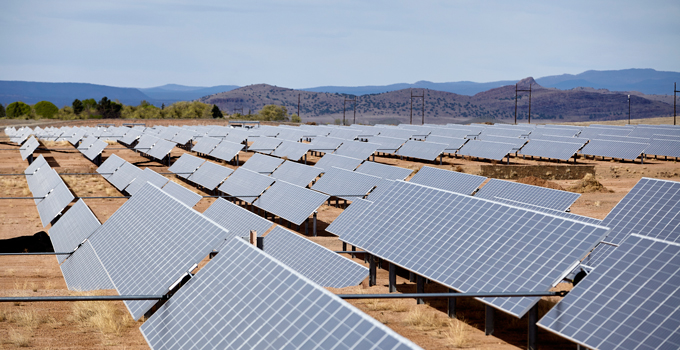
Because solar builds are modular and repetitive, there is a temptation to take a ‘Lego approach’. This is appropriate once designers have convinced themselves that the Lego bricks themselves are fully optimised and fit for purpose.
Smart, site-specific design not only gets the ‘bricks’ right, but also aims for efficiency in all aspects and fully considers technology and standards, reliability and robustness, safety, layout, civil and structural issues, and the project lifecycle. This creates benefits that multiply across the whole project and through time.
1 – Technology and standards
Fit for purpose means, in part, meeting standards. While solar standards are evolving fast and the requirements for grid connection are tightening, future-proofing with inverter technology with high-end capability seems to make sense.
AS4777 is the main standard specifically addressing inverter energy systems in Australia. It has recently been revised and includes some significant changes to inverter requirements. Formally, it only applies to small inverters/systems, but the capability requirements act as a useful surrogate standard for larger equipment.
All inverters must still, of course, comply with all the legislated electrical and fire safety, access, and environmental requirements, so if choosing an inverter for which these requirements have not been demonstrated, make sure you allow time and budget for the compliance process.
Nevertheless, inverter technology is developing quickly, and many capabilities built into inverters go well beyond the requirements of the standards. These can add value to your project by reducing downtime or potentially enabling additional revenue streams such as grid support.
In Australia, the National Electricity Rules (NER) specify the performance requirements for inverters in schedule 5. As we noted in a previous article <link to the art of solar grid connection>, choosing inverters at the higher end of functionality and enabling that functionality will help avoid niggling performance issues and constraints across the life of the plant.
Life-cycle thinking should also flow through to other internal farm considerations such as the value that trackers may add or the type and arrangement of PV cells relative to the inverters and the DC collector system.
For small to medium-scale systems (1–6 MW) you may wish to investigate if either string inverter or centralised inverter concepts offer the best value and operational flexibility.
2 – Reliability and robustness
Production is king. Every sunny day on which PV cell strings, inverters or cables are disconnected due to faults represents potentially avoidable lost production and revenue.
Design can help to minimise these sorts of outages in four main ways:
Cell layout: Diffuse and direct shadowing can limit the effectiveness of energy capture across the farm. This is particularly challenging where the farm is south of the Tropic and the angle of the sun varies across the year. Minimising the effects of the natural and built environment and the near shading of on-site structures should be considered to ensure high cell utilisation throughout the year.
Redundancy and switching: Consider eliminating common points of failure where the cost of doing so remains feasible. This could include designing for only partial failure. The modular nature of the solar farm may naturally exhibit this feature but it is worth exploring whether the redundancy cannot be extended to single points of failure like transformers and switchgear. Switchgear should be employed to allow sufficient isolation as well as protection.
Monitoring: The speed of response to equipment failure can significantly reduce the impact on production. Capital spent on data links to remote inverters can provide helpful feedback on where faults have occurred and how to manage them even before technicians arrive on site. Monitoring may also provide some value in showing efficiency degradation due to dust or grime on PV cells without potentially costly over-cleaning or observation routines.
Contingency planning: The design should be conscious of the need (where there is value) to quickly replace faulty equipment without exacerbating lost production. Providing sufficient switches and cable junction boxes for safe and quick replacement of medium-voltage AC equipment or low-voltage DC equipment will assist operators to respond faster to outages.
3 – Safety of the public and personnel
Designing for safety of construction and operation and for the safety of the public are important legal requirements.
Ensuring easy access for constructing and maintaining the electrical infrastructure and managing the land will not only enhance the safety of personnel but decrease the costs associated with working on the site. Providing lighting or hard stands for lighting equipment may also allow safe maintenance and night works.

4 – Layout
If you have a rectangular, level, north-facing space, you are fortunate. This opens up the full spectrum of layout options and it is likely that trackers may feature in the design.
However, for every other situation, there is a complex geometric trade-off between practical considerations: levelling earthworks vs more complex and time-consuming racking; orienting modules for maximum fit vs north alignment for maximum energy yield; regular layout of strings to simplify installation and maintenance vs utilising all available land.
This can be some of the most time-consuming design optimisation and requires simultaneous consideration of electrical, civil, planning, energy and financial requirements.
5 – Civil and structural
The civil structural design of array mounting is a fundamental consideration. Design of footings to suit soil conditions requires extensive geotech, and there may be a trade-off between the effort required vs the risk of variation during construction.
Another key risk for solar farms is flooding. Once you’ve identified the potential flood conditions and possible effects, you will need to consider what mitigations are available under planning and environmental conditions.
Add to this all the operational requirements for vehicle movements and the cleaning and servicing of modules, and the civil and structural design becomes a significant work package.
6 – Lifecycle considerations
The sustainability of your solar plant doesn’t just make good commercial sense; it may also increase community acceptance.
Selection of robust equipment suitable for exposure to harsh and extreme weather will minimise the need for refurbishment, waste, and failure due to exposure to service conditions and duties that are beyond plant capabilities. This may mean designing elements of the plant that will have residual service life beyond the investment time frame.
Just as ease of construction is a key design consideration, also consider the ease of demolition, site remediation and/or repowering. Ease of deconstruction of PV arrays and the ability to reclaim copper and other valuable metals may decrease your solar farm’s environmental impact.
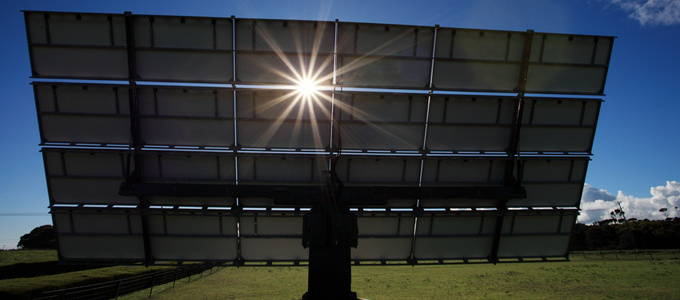
The cost-effective level of design effort for solar farms is often thought to be low. However, we often encounter opportunities or imperatives to improve on standard approaches to suit a particular site or project.
Successful deployment of solar PV generation must include thoughtful design that considers the immediate challenges of rapid and repeated implementation while selecting from a vast range of suppliers and ensuring the greatest efficiency, operability and value for the long term.
If you would like to find out more about how Entura can help you optimise the design of your solar farm, please Silke Schwartz on +61 407 886 872 or Patrick Pease.
About the author
Dr Chris Blanksby is a Senior Renewable Energy Engineer at Entura, and Entura’s lead solar energy specialist. Chris has undertaken and published research on the solar resource in Australia, and has led several due diligence and owner’s engineer projects for wind, solar and microgrid projects in Australia, the Pacific and Asia. Chris is currently leading Entura’s owner’s engineer team assisting the Government of Cook Islands to implement six solar PV microgrid projects, and build capacity towards their 100% renewable target.
MORE THOUGHT LEADERSHIP ARTICLES
Overcoming the barriers to pumped storage hydropower
With energy reliability a hot topic in Australia, eyes are now turning to pumped storage hydropower… but what has been holding it back?

There are only three pumped storage hydropower projects in Australia, with the most recent completed more than thirty years ago. This is despite the ability of pumped storage hydropower projects to provide the large-scale storage that would complement increasing levels of renewable energy. Why is this, and what are the barriers to developing more Australian pumped storage hydropower projects?
Around the world, pumped storage hydropower projects make up the vast majority of grid energy storage and have traditionally been used by energy utilities to supply additional power to a grid during times of highest demand.
As part of a portfolio of power stations, a utility might operate a pumped storage project infrequently only, if the cost of pumping the water back to the upper storage exceeds the revenue that can be generated from its release.
The main issue facing developers trying to prove the viability of a new pumped storage project is that a sufficient price differential is required to pay for the pumping and to account for the efficiency losses in transmission, pumping and generation. The generation price needs to be sufficiently higher than the pumping price just to repay the variable pumping costs. To repay the heavy capital investment, a margin is required over and above the break-even cost of pumping. This is particularly true where proposed developments are ‘stand-alone’ and cannot be optimised as part of a corporate generation portfolio.
In recent years, electricity price spikes have been irregular with few occurrences each year. Due to the significant capital costs, a pumped storage scheme would require a certain number of pumping/generation cycles at high or maximum pricing to pay a return on investment. These price spikes are unpredictable, so building a business case around these events is risky.
Historically, the daily fluctuation of power prices has not been sufficient or regular enough to attract pumped storage developers. This is beginning to change with increasing penetration of renewable energy leading to an increase in both low and high price periods. More frequent, sustained periods of hot weather (as predicted by climate change models) will also drive up demand for power and therefore the market price.
In the last few months, volatility has greatly increased, creating a greater differential between baseload and peak pricing. This will increase the viability of pumped storage schemes, although the unpredictability and challenges of financing capital intensive assets will remain.
But, even when the economics are right, there are still some other barriers that proponents of pumped storage projects need to overcome:
Finding the right site
Pumped storage projects require significant capital for development. Minimising the cost of construction and operation is key to the successful development of a project. Choosing the right location is a matter of identifying a site with ideal topography, a source of water and good proximity to and location within the transmission network.
A wealth of information is available that is relevant to identifying potential pumped storage hydropower sites. Concept studies for pumped storage hydropower sites can screen potential sites quickly and offer developers greater insight into possible opportunities.
Negotiating access to appropriate sites for pumped storage
While a pumped storage project generally has a significantly smaller footprint than a traditional hydropower project, the features of natural topography that are ideal for pumped storage – high, steep hillsides or cliffs – tend also to be places of great natural beauty and are often designated as reserves, are expensive private land, or have high environmental or social value.
State governments can assist here through streamlined planning and approvals processes for infrastructure developments. This can make sure that the challenges of developing sites do not become insurmountable for developers.
Perceived environmental impacts
Pumped storage projects can occupy many square kilometres and also require transmission lines to connect to the electricity market. Like traditional hydropower projects, pumped storage projects need to attend to environmental issues associated with the project. Environmental impacts for pumped storage projects are assessed in the same manner as for all infrastructure developments.
If the impacts of a project can be mitigated to the satisfaction of the relevant regulatory body and international Standards (such as the International Hydropower Association and International Finance Corporation), a pumped storage hydropower project should face no greater hurdle than any other infrastructure project in this respect.
A pumped storage project may also have to deal with the perception that it uses carbon-intensive thermal power to pump water during the pumping cycle. This may be true unless there is a surplus of renewable energy available, in which case the pumped storage project could be seen to be using this excess renewable energy for pumping. As renewable energy penetration grows, the opportunities for storing surplus renewable energy will increase.
An unfavourable regulatory framework
Inconsistent and uncertain policy positions of the major political parties at both federal and state levels reduce confidence in the energy industry, which deters investment. With debate raging over energy security, a bipartisan view on energy policy, which transcends party politics and the electoral cycle, is urgently needed.
Existing mechanisms are in place to support the renewable energy industry. The Renewable Energy Target (RET) promotes investment in renewable energy projects; however, pumped storage is specifically excluded from the RET where the energy used for pumping exceeds the energy generated. Current policy would have to be amended or complementary legislation enacted in order to reward large-scale storage for the service it provides.
Such changes could include market mechanisms for large-scale storage that could offer incentives for providing inertia and ancillary services from storage at times of peak demand as well as power. Another possible change could be to ensure that large-scale storage asset owners are not penalised under the RET for energy used in the pumping process. This would encourage the development of energy storage as a complement to the growth of renewable energy.
High cost of development activities
The long lead times and high development costs of pumped storage projects are major deterrents to developers. Projects generally take more than 4 to 5 years from the point of conception to ‘power on’, and require millions of dollars of capital for development and hundreds of millions for construction. In other words, when funding is first committed, it may not see a return for five years or more.
In an effort to overcome this barrier, the Australian Renewable Energy Agency (ARENA) has indicated it will allocate at least $20 million to finance the accelerated development of flexible capacity and large-scale storage projects. The Clean Energy Finance Corporation (CEFC) has also committed to provide successful ARENA funding recipients with the opportunity to secure long-term debt finance to support their projects.
With an increasing interest and emphasis on storage in a power system that is becoming increasingly unreliable (e.g. load shedding in South Australia and lack of reserve events in New South Wales), and with finance from ARENA and CEFC for large-scale storage, the barriers to pumped storage development are gradually diminishing. This action can’t come soon enough for residents suffering through blackouts on days over 40°C.
If you would like to discuss how Entura can help you overcome the barriers for a pumped storage hydropower project, please contact Patrick Pease, Nick West on +61 408 952 315, or Richard Herweynen on +61 3 6245 4130.
A version of this article has been previously published as an op-ed in the Adelaide Advertiser.
About the authors
Nick West is a civil engineer at Entura with 16 years of experience, primarily in hydraulics and hydropower. Nick’s skills range from the technical analysis of the layout of hydropower projects to the preparation of contractual project documents and computational hydraulic modelling. Nick was a key team member of the Kidston Pumped Storage Project Technical Feasibility Study and was involved throughout the development and construction of the Neusberg Hydroelectric Project in South Africa. Nick has successfully completed projects ranging from hydraulic design for small residential developments to the feasibility study of a cascade of four large hydroelectric projects in Malaysia.
Richard Herweynen is Entura’s Technical Director, Water. Richard has three decades of experience in dam and hydropower engineering, and has worked throughout the Indo-Pacific region on both dam and hydropower projects, covering all aspects including investigations, feasibility studies, detailed design, construction liaison, operation and maintenance and risk assessment for both new and existing projects. Richard has been part of a number of recent expert review panels for major water projects. He participated in the ANCOLD working group for concrete gravity dams and is the Chairman of the ICOLD technical committee on engineering activities in the planning process for water resources projects. Richard has won many engineering excellence and innovation awards (including Engineers Australia’s Professional Engineer of the Year 2012 – Tasmanian Division), and has published more than 30 technical papers on dam engineering.
MORE THOUGHT LEADERSHIP ARTICLES
Planning a renewable energy journey in the Pacific
Like many stories of island journeys, the pursuit of high levels of renewable energy in the Pacific involves good planning and skilled navigation to stay safe and on course, and holds the promise of rich rewards.

Throughout the Pacific, island communities are embracing ambitious renewable energy targets , many as high as 100% renewables over the next decade or two. This isn’t surprising, given that these islands are already experiencing significant impacts of climate change, and recognise the environmental benefits of reducing or replacing carbon-intensive diesel power generation.
There are also sound economic benefits to reducing reliance on expensive diesel fuel, which remains the single largest expense to generate power in these remote locations.
The answer to meeting targets, while also reducing carbon emissions and costs, lies in power systems that use only renewable energy. However, transitioning to higher levels of renewable energy in power systems requires confidence that the renewables can provide the energy security, self-sufficiency and system stability required by these remote communities.
Renewable energy technologies may pose some challenges for reliability and quality of power supply, but remedies can be found in enabling technologies. In an isolated power system, matching the renewable technologies with the right enabling technologies at the right moment needs detailed planning.
Every journey needs a map
As each island community’s renewable energy journey is different, careful strategic planning is needed to choose the right solution, to integrate it in the right way, and to be able to scale it up effectively to meet increasing renewable targets and electricity demands.
Entura has been helping a number of Pacific island communities embark on their renewable energy journeys. Through this experience, we’ve developed a map of the key stages of the journey:
Stage 1: Planning – In this stage, we explore the status of the current power generation assets, determine what needs to be improved, understand the renewable resource, and investigate the cost of the renewable energy journey and options for funding it.
Stage 2: Introduction of renewables – In this stage, we begin by harvesting the ‘low-hanging fruit’ – introducing the renewables that we can without enablers or network upgrades, and without changing the control philosophy. At this stage, the renewables are perceived as mostly load offset, and could reach up to 15–20% of the island’s total energy demand. Few enabling technologies are necessary at this stage.
Stage 3: Expansion of renewables and introduction of enablers – As we progress beyond 15 to 20% renewable penetration, we need to stop, review and adjust course if necessary. To progress towards 35% renewable energy contribution to the power system demand, we need to adjust the system’s operating philosophy to integrate large-scale renewables, and introduce the appropriate enabling technologies.
Stage 4: Expansion of renewables and enablers – This stage marks the largest change in how an island power system is operated. As we move beyond 50% renewables, again we should stop, review and adjust course where needed. At this stage, power systems become very complex to operate and maintain as high renewable penetration can only be achieved through a delicate balance of multiple new enabling technologies working in perfect sync. The island community could find itself investing more in enabling technologies than in renewable energy at this stage, but this could result in a higher renewable energy contribution. It is also crucial at this point to consider changes to energy delivery, relationships with customers and to the utility’s procedures, and to building its personnel capabilities.
Stage 5: Approaching 100% renewables – As most of the major changes to the power system are introduced in the earlier stages, Stage 5 is about finishing off the journey. The ‘last renewable mile’ is usually the most expensive one, so this last stage is all about identifying enabling technologies and techniques that can bridge the gap between 70–80% and 100% renewable contribution, without significant increases in the cost of electricity.
Yap’s journey to 25% renewables
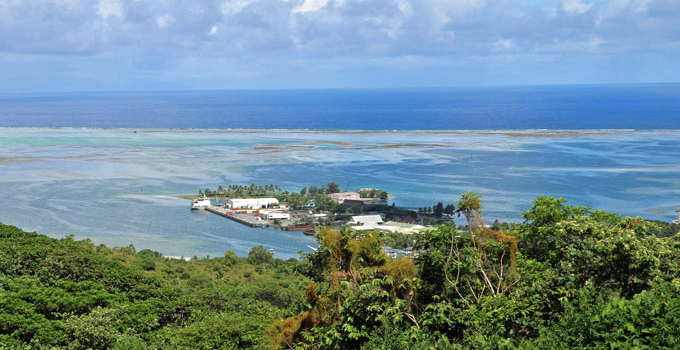
Entura has helped several island communities plan and begin their renewable journeys. One example is the island of Yap in the North Pacific.
We’ve been working with the Yap State Public Service Corporation to reduce Yap’s heavy reliance on imported diesel for power generation, and to enable the island to rely as much as possible on indigenous, renewable resources through an integrated high-penetration renewable energy remote area power system (RAPS).
After decades of operating on diesel fuel only, the system will soon reach 25% renewable energy contribution. Once completed, the project aims to enable Yap to experience up to 70% instantaneous renewable penetration when conditions allow, and to deliver an annual fuel saving of up to US$500 000.
Back in 2014, Entura helped the Yap community plan their renewable journey by embarking on Stage 1. Since then, Entura has helped the Yap utility to reach Stage 2 by integrating small amounts of solar and by building its capability to install and maintain solar arrays.
The Yap renewable energy development project is now entering Stage 3, in which a new breed of high-renewable-supporting diesel generators are being installed, major works are being carried out to install three 275 kW cyclone-proof wind turbines, an island-wide solar-controlling communications network for 500 kW distributed solar PV is being rolled out, and a centralised control system is being installed.
Once these activities are completed, the Yap power system will be firmly in Stage 3, and ready for future stages in Yap’s renewable journey.
On course for 100% renewables in the Cook Islands
The Cook Islands is a group of 15 small islands in the South Pacific, to the north-east of New Zealand. Entura is helping the Cook Islands on its journey to reduce reliance on diesel fuel and achieve greater energy security, self-sufficiency and sustainability through developing renewable power systems on six islands. The country’s goal is to generate electricity from renewable energy sources on all islands by 2020.
The islands of Mauke, Mitiaro, Mangaia and Atiu have small average loads of around 100kW each. After careful planning, upgrades to the distribution grid and programs to train and build local capacity, these islands will quickly reach Stage 5 of their journeys, operating at almost 100% renewable energy using solar PV and batteries, with diesel providing backup during longer periods of renewable energy resource deficiency.
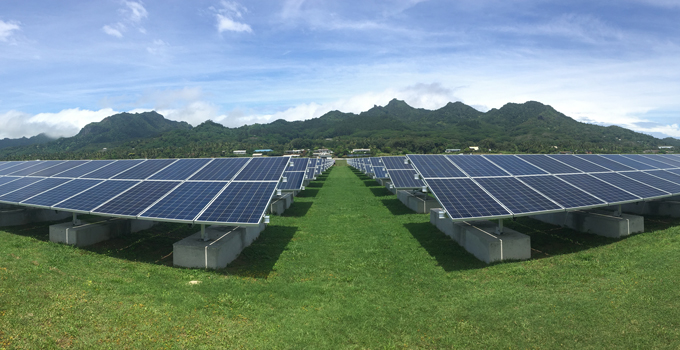
A fifth island, Aitutaki, is currently at Stage 1, finalising the planning of its renewable journey. It will rapidly jump to Stage 3 as 1 MW of solar PV, a 0.5 MW power battery, new diesel generator and centralised control system start working together to deliver a power system with a renewable contribution of up to 25%.
Rarotonga is the largest, main island in the Cook Islands and operates a complex power system requiring meticulous strategic planning. This power system is already at Stage 2, with a renewable contribution surpassing 10% due to the contribution of residential and commercial solar. Entura is helping the Rarotongan utility to move towards Stage 3 by introducing an additional 1 MW of solar PV and enabling technologies such as energy storage, which will help the system absorb even more renewable energy.
The journey continues
It is often said that the end of one journey is the beginning of another. After a community has reached 100% renewable energy, it needs to continue its journey to maintain that status through proper operation, maintenance and asset management, to secure the system for years to come. This long-term asset management challenge involves attention to both physical and human assets, including capacity building, training and skills development for individuals and organisations.
Entura is bringing practical maintenance know-how to island communities such as Yap and the Cook Islands. And, through the Entura clean energy and water institute, we are helping to boost the skills of technicians and managers. By doing so, Entura is offering island communities a guiding hand from the start of the renewable journey right through to its destination, and beyond.
If you would like to discuss how Entura can support your renewable energy journey, please contact Silke Schwartz on +61 407 886 872 or Shekhar Prince on +61 412 402 110.
A version of this article has been previously published by RenewableEnergyWorld.com
MORE THOUGHT LEADERSHIP ARTICLES
Is your dam instrumentation telling you what you need to know?
For dam owners, measuring the right things in the right locations is essential for a successful dam safety program.
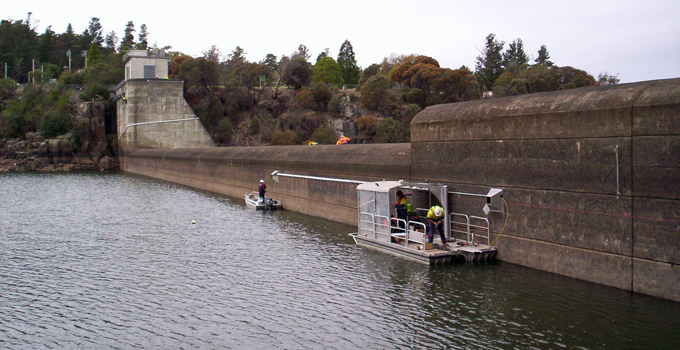
Dam owners who value dam safety need useful data from reliable instrumentation to be confident that they’ll be warned if a dam safety incident is developing, which, if undetected, could lead to an emergency.
However, you need to be measuring the right things, providing useful data for interpreting the dam’s performance. It is also important to find the optimum balance as too much data can be time-consuming, requiring significant technical resources to collect, process and analyse properly.
Am I measuring the right things on my dam?
The main purpose of dam instrumentation is to provide useful data on the dam’s performance: whether the dam is performing as expected, or something unusual is happening. Something unusual happening could indicate the beginnings of a dam safety incident. Knowing early can provide time to take action, and prevent a dam safety incident from developing into an emergency. To be able to take action, you need to be measuring the correct things on your particular dam.
A number of dam authorities including the Australian National Committee on Large Dams (ANCOLD) provide guidelines on dam safety management which include some guidance on the type of instrumentation normally adopted for a particular dam type. However, no guideline or standard can prescribe exactly what is required for your unique dam.
Any instrumentation design for a new dam, or review of instrumentation for an existing dam, should be based on the identified failure modes for your asset. As part of any dam design or review process, one of the first steps is to identify the relevant failure modes for the dam, and how these failure modes would initiate. This information is essential for determining what parameters should be measured, and therefore the type and location of instrumentation.
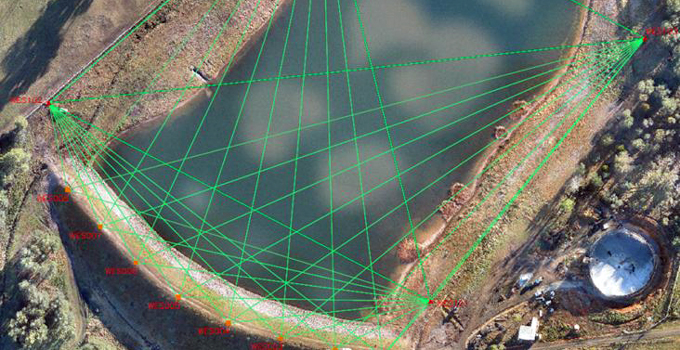
Rather than basing your instrumentation requirements for a new dam on what was selected for your last project, you should consider the unique characteristics of a particular dam site and design. Potential failure modes should be identified, and the instrumentation should be located, selected and specified to provide data that will help identify the initiation of these potential failure modes. This will ensure that you are collecting data for good reason (rather than for the sake of collecting data), and that there is a strong link between the surveillance data and the safety of your dam.
Key failure modes will depend on the type of dam, the characteristics of the dam site and particular details associated with the dam design. For example, following the review of an earth and rockfill embankment dam on a soil foundation, a key failure mode was identified as piping through the dam or foundation. The design therefore included an appropriate set of instrumentation, including piezometers and leakage weirs, to monitor the development of that failure mode.
Do I need to keep measuring and collecting data?
The basis for evaluating whether to keep measuring and collecting data, and whether instrumentation needs to be replaced if it is no longer working, is to determine the potential failure modes for your dam, and to review the instrumentation based on these failure modes.
When reviewing your dam instrumentation, ask the following:
- Does the particular instrument measure a key failure mode?
- Is the monitoring data useful and reliable?
- Would other instruments provide the same or better level of monitoring data on this failure mode?
This review could potentially lead to some rationalisation of existing instrumentation, saving operational expenses and allowing you to focus your dam safety budget on more critical aspects. For example, a particular concrete dam we worked on had an extensive number of thermocouples installed to measure temperatures during construction due to concerns of thermally induced cracking. Once the dam had been operational for a number of years, the temperature data no longer provided information on a relevant failure mode, so the thermocouple monitoring system was decommissioned.
Reviewing your dam instrumentation may also identify new instrumentation requirements, if current instrumentation is not providing the information needed for a particular failure mode. For example, following the review of a concrete arch dam, sliding on a crack within the concrete was identified as a key failure mode. Additional monitoring was specified to monitor the width and extent of the crack.
Reviewing your dam monitoring program
Entura has developed the following checklist to help you review your dam monitoring program and rationalise it to focus on key failure modes. This checklist can also be used to assess data monitoring programs for other important assets, such as underground caverns for power stations.
| Step 1 | Identify the key failure modes for the dam, and how they would initiate. |
| Step 2 | Identify dam safety instrumentation required to monitor the initiation of each key failure mode. |
| Step 3 | Review the current level of dam safety instrumentation. |
| Step 4 | If current instrumentation does not address a key failure mode, determine the additional instrumentation required. |
| Step 5 | If any of the current instrumentation does not provide relevant data about initiation of any of the identified failure modes, decommission it. |
| Step 6 | Undertake capital works to install new instrumentation (if required). |
| Step 7 | Revise dam safety systems to incorporate revised instrumentation. |
| Step 8 | Use surveillance data to report against the identified failure modes. |
Dam surveillance, including both inspections and instrumentation monitoring, is a fundamental activity in any dam safety program. But don’t just collect data for the sake of collecting data. Make sure that the data is telling you everything you need to know about the potential failure modes for your unique dam.
To discuss how you can get your instrumentation right for your particular dam or other critical assets, please contact Phillip Ellerton on +61 439 010 172, Tim Griggs on +61 3 6245 4152 or Richard Herweynen on +61 3 6245 4130.
About the authors
Tim Griggs is a Senior Dams Engineer with Entura. He has over 20 years of experience in civil and dam engineering including the design and construction support of a number of new dams, upgrades to existing dams and dam safety review work. Tim has a particular interest in dam safety instrumentation and has prepared instrumentation specifications for both new and existing dam projects.
Richard Herweynen is Entura’s Technical Director, Water. Richard has three decades of experience in dam and hydropower engineering, and has worked throughout the Indo-Pacific region on both dam and hydropower projects, covering all aspects including investigations, feasibility studies, detailed design, construction liaison, operation and maintenance and risk assessment for both new and existing projects. Richard has been part of a number of recent expert review panels for major water projects. He participated in the ANCOLD working group for concrete gravity dams and is the Chairman of the ICOLD technical committee on engineering activities in the planning process for water resources projects. Richard has won many engineering excellence and innovation awards (including Engineers Australia’s Professional Engineer of the Year 2012 – Tasmanian Division), and has published more than 30 technical papers on dam engineering.
MORE THOUGHT LEADERSHIP ARTICLES
Planning for solar success
Planning regimes for large-scale infrastructure are rarely simple. Investing time and energy in planning for project approvals makes it more likely that your solar project will succeed.
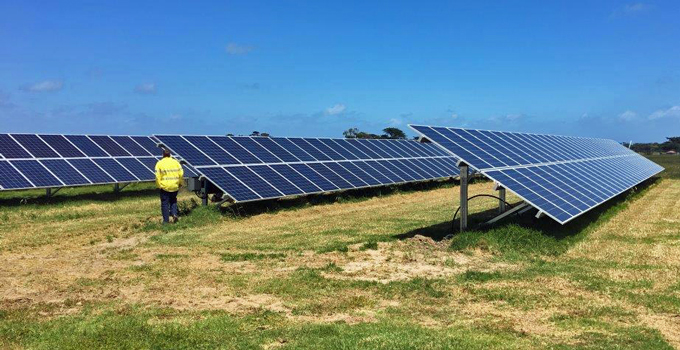
In this third part of our series of articles on overcoming potential roadblocks to solar developments, we take a closer look at how to navigate the planning environment for utility-scale solar PV energy projects.
Unlike domestic solar installations, which are often exempted from needing planning approval, larger utility-scale solar installations are likely to fall within the general planning requirements for renewable energy, which can significantly restrict the areas in which they can be considered.
The increased flexibility of the size and location of solar installations, and their ability to match the needs of users and supplement the capacity of the network, means that demand for solar is likely to rise in areas close to urban development. Solar installations servicing schools and universities, commercial development clusters or even specific neighbourhoods are set to become more attractive. The solar farm may become the new hobby farm.
However, due to the current constraints of planning systems in several Australian jurisdictions, renewable energy developments of this scale on many of these sites may be prohibited or dealt with inconsistently. Development control systems across Australia are generally not set up to facilitate development; rather, they control impacts. They are not proactive and lag behind the market, struggling to respond to rapidly emerging technologies and changing market demands. They can be frustrating to navigate and hard to change, which sometimes makes obtaining approvals hard work.
Is it easier to plan for a solar farm?
The planning system tends not to differentiate between various forms of renewable energy generation, constraining all forms due to the perception and experience of those forms with greater perceived impacts (such as wind farms).
Compared with wind farms, solar farms are less likely to encounter concerns about potential impacts on human health, visual amenity, birds and bats, or noise levels and have fewer physical constraints on location. Although solar developments are likely to have less visual impact than wind farms, this will still be an important issue to consider, as will glare and the area of ground coverage. High ground coverage means more potential impact on existing vegetation and less opportunity for complementary land uses.
While solar developments have more flexibility than some other forms of renewable generation to respond to, and avoid, local constraints, many of the important siting requirements are common to all renewable developments, such as the essentials of grid connection and construction access.
A particular consideration for large-scale solar developments is that large areas of flat land are often located in areas outside of council jurisdiction, which are state-owned and can be encumbered by existing leasing arrangements. More remote areas have greater potential to involve existing Native Title rights.
Solar developments have the potential to re-use degraded sites, such as mine sites which are no longer viable, and can complement the existing management and rehabilitation regime for these sites while also offering long-term energy solutions.
Navigating the planning requirements
The planning system is complex, and its potential impact on the cost, timeframe and overall success of your project should never be underestimated. Approvals for solar developments are not necessarily more complex than for other renewable energy developments, but some aspects will differ and the specifics of your particular project need to be taken into account.

As with all large-scale infrastructure development, comprehensive regulatory mapping at an early feasibility level is essential to understand what approvals are likely to be required and where any dependencies exist. Critical approval paths, roadblocks, timeframes and likely information requirements can be estimated and guide stakeholder discussion.
Depending on the scale, location and potential impacts of the project, approvals may be required at the Commonwealth level (through the operation of the Environmental Protection and Biodiversity Conservation Act 1999), the state level (through the implementation of state environmental protection legislation), and the local level (through the implementation of a local development control plan or planning scheme).
Once the approval requirements are confirmed, detailed technical studies are essential for clearly demonstrating that the issues are understood and that the development (and any mitigation or management measures) is appropriate and effective.
The application documentation should be targeted to match and address the requirements of the relevant development control document drawing on the conclusion of the technical studies. It should include both a summary of the proposal that identifies the key issues and mitigation measures, and the detailed technical studies which underpin the planning assessment.
When permits are issued, it is usual for there to be a number of conditions requiring further actions or additional documentation to be submitted. Planning for these requirements is essential, as noncompliance can result in action by the responsible authority or, in some cases, lapsing of the permit.
Ultimately, your best chance of planning success is through fully exploring and understanding the development control provisions, permits, consents and the level of assessment that are required, obtaining high-quality and comprehensive specialist studies, and keeping a watchful eye on any project-specific hurdles.
If you would like to find out more about how Entura can help you overcome planning roadblocks for your solar development, contact Silke Schwartz on +61 407 886 872 or Patrick Pease.
MORE THOUGHT LEADERSHIP ARTICLES
Is pumped storage hydro the key to increasing renewables in Australia?
Recent electricity price spikes and a state-wide blackout in South Australia have highlighted the need for reliable power to balance the potential volatility of some renewable power sources.
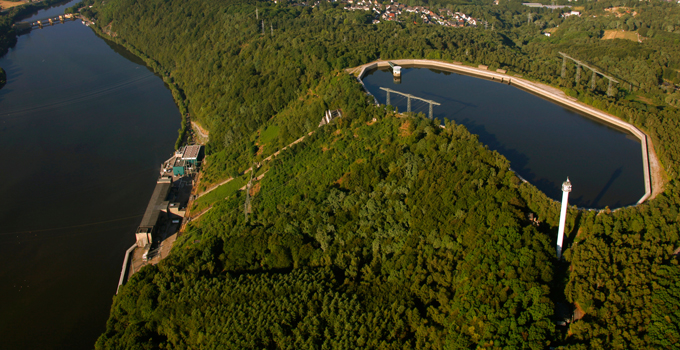
Pumped storage hydropower projects are a natural fit in an energy market with high penetration of renewable energy as they help to maximise the use of the renewables that are subject to the vagaries of the weather. Pumped storage provides a load when the wind is blowing and the sun is shining, and it also provides a reliable and immediate source of energy when the sun has set and the wind has dropped.
The recent completion of the feasibility study for Genex Power’s Kidston Pumped Storage Hydro Project in North Queensland shows this approach is now technically and commercially feasible.
Pumped storage hydro offers utility-scale storage and system stability
As the proportion of renewable energy in an energy market increases, the need grows for the stability and consistency provided by utility-scale energy storage. For example, South Australia needs system-wide storage of 500 MW for a period of 10 hours to improve the flexibility of wind farm operators, according to the Melbourne Energy Institute.
At the smaller scale of energy storage, the buzz about various types of batteries continues – but the only storage option with a proven track record at the utility scale is pumped storage hydropower.
Pumped storage hydropower works by pumping the water stored in a lower reservoir into a more elevated reservoir. The water stored at height can be passed through a turbine on its path back to the lower reservoir, creating electricity as and when needed, and making the best use of the water resource without waste.
In a recent article, my colleague Donald Vaughan stated that a functioning AC power system needs inertia, fault level, frequency and voltage control as well as energy sources to function to an acceptable standard. Pumped-storage assets can provide all of these important contributions to a stable and successful power system, levelling out the fluctuations in availability of wind and solar energy, and helping to regulate voltage and frequency.
New opportunities for pumped storage hydro in Australia
Despite the significant potential and benefits of pumped storage hydro projects, only three projects currently exist in Australia (two in New South Wales and one in Queensland). These schemes were built in markets in which generation was mainly thermal, where the pumped storage could supplement supply at times of peak demand.
A number of possible sites have been identified for new opportunities for pumped storage hydro, but so far very few have been developed beyond concept level. This means that opportunities exist for developers in states such as South Australia and Queensland that have set ambitious renewables targets and must maintain energy security.
Three factors for pumped storage hydro success
For successful pumped storage hydro projects, developers need to identify a viable site, achieve a technically and commercially feasible design, and make the most of the economics of the energy market.
1 – Identifying a viable site
For a pumped storage project, what’s needed is a source of water, and two reservoirs separated by a significant change in elevation. The water could come from a nearby river, an existing reservoir, or the sea. With many thousands of potential sites across the country, a developer needs smart methods of filtering to reduce the many possibilities to just a few ideal sites.
An important consideration is the effect on the viability of pumped storage projects of the relative remoteness of sites, through both the efficiency of the power’s round trip and the marginal loss factors (factors applied to a generator or a load, and calculated based on the size and distance of the generator or load from a central point).
As for any development, the process of identifying sites must also consider topography, land use and environmental constraints. Pumped storage projects generally present similar but reduced environmental risks as conventional hydropower projects as they tend to have smaller footprints.
2 – Achieving a technically and commercially feasible design
Entura’s experience on Genex Power’s Kidston pumped storage hydro project has shown that it is possible to construct low-cost pumped storage projects in Australia through careful site identification and clever project design. Where a pair of suitable reservoirs don’t already exist, constructing a turkey’s nest dam may offer a solution.
A turkey’s nest dam is a reservoir built by excavating earth from the centre of the reservoir and moving it to the edge to help form a continuous embankment. Turkey’s nest dams have been used successfully around the world in pumped storage hydropower projects, providing opportunities to build projects where elevation changes significantly over a short distance.
Additionally, turkey’s nest dams can help to minimise capital costs by reducing conduit lengths and maximising head (the difference in elevation between the upper and lower reservoirs).
3 – Making the most of the economics of the energy market
Understanding the opportunities and constraints in the energy market is critical to a pumped storage project’s financial viability.
When you can store energy, you can dispatch electricity at peak times, gaining the highest price point in the market. Conversely, water is pumped to the upper reservoir in off-peak periods or when supply from renewable sources is high and market prices are low. This ‘energy arbitrage’ makes the most of the price difference in the electricity market.
Selecting the optimum installed capacity of a pumped storage project also requires detailed understanding of energy markets. It is possible that a pumped storage project can act to flatten peak prices to the point where the returns on a project are insufficient to meet financiers’ hurdles, so detailed revenue modelling is essential to determine the tipping point between enough and too much installed capacity.
With careful selection of sites, clever design, and the right mix of capacity and costs, pumped storage hydro holds an important key to unlocking the full potential of renewables in Australia’s electricity market.
If you would like to discuss how Entura can help you explore potential opportunities for pumped storage hydropower projects, please contact Nick West on +61 408 952 315 or Richard Herweynen on +61 3 6245 4130.
About the author
Nick West is a civil engineer at Entura with 15 years’ experience, primarily in hydraulics and hydropower. Nick’s skills range from the technical analysis of the layout of hydropower projects to the preparation of contractual project documents and computational hydraulic modelling. Nick was a key team member of the Kidston Pumped Storage Project Technical Feasibility Study and was involved throughout the recently completed Neusberg Hydroelectric Project in South Africa. Nick has successfully completed projects ranging from hydraulic design for small residential developments to the feasibility study of a cascade of four large hydroelectric projects in Malaysia.
MORE THOUGHT LEADERSHIP ARTICLES
Five steps to better understanding geological risks in hydropower projects
Not fully understanding the geological conditions is one of the biggest risks in a hydropower project, and can lead to large cost blow-outs, major repairs and even public safety issues.

Understanding the geological conditions enables engineers to design safe and stable structures, and to minimise project and financial risk. The geological risks don’t stop at the dam site, but also extend to the spillway, powerhouse, tunnels and other structures.
Hydropower developers often ask: ‘how much should I spend on geological investigations for my hydropower project?’ and ‘how many drill holes do you normally need for a dam site?’
The answer depends on what is already known and what risks have been identified through the available regional geology and the geological mapping of the site. Geological investigations aim to understand the risks at the site by progressively developing a geological model.
Five steps to achieving a good geological model
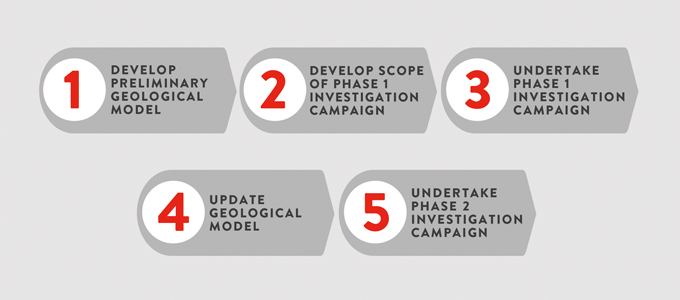
It is important to have a clear, systematic process to achieve a good geological model and, therefore, ensure that the subsurface geological risks are well defined.
Entura has developed and adopted the following five-step process:
Step 1 – Develop preliminary geological model
The first step is to develop a preliminary geological model of the site based on available geological information, aerial photos, topographic data and geological surface mapping. Spending the necessary time to source and collate all the available information is valuable.
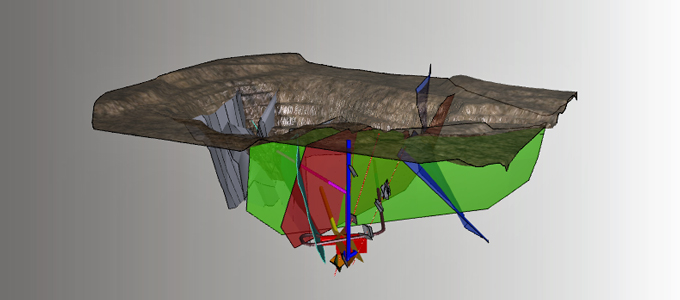
The model should include not only the geological units but also the main defects such as bedding, joints, shears and faults. Understanding the main defects helps to determine whether there are any potential failure mechanisms within the foundations underlying the project structures.
Step 2 – Develop scope of phase 1 investigation campaign
Based on this preliminary geological model, we can determine what needs to be confirmed or known, and then plan the phase 1 investigation campaign. The investigations must relate strongly to what you are trying to confirm or determine with the geological model. Without this strong relationship, the developer may be wasting money.
The investigation techniques planned depend on many factors including known geological conditions, information gaps, environmental constraints, site access, available skills and equipment, time and cost. There should be a clear objective for every test pit excavated, geological hole drilled, geophysical survey performed and laboratory test undertaken.
The outcome of Step 2 is the scope of works for the phase 1 investigation campaign. The development of the scope of works is a task in itself and should be performed by a suitably qualified engineering geologist. The preparation of a scope of works ensures that the developer can call for quotations from prospective consultants and contractors with confidence that the campaign will be targeted at improving the understanding of the identified geological risks.
Step 3 – Undertake phase 1 investigation campaign
The third step in developing a good geological model is to undertake the phase 1 investigation campaign.
The investigation campaign should be supervised by an appropriately qualified engineering geologist who is empowered to direct the investigations contractor and who has the flexibility to adjust the investigations as necessary based on the site observations.
For example, the core is not the only result of a drilling excavation: drilling rates, water loss, the colour of drill cuttings, hole collapse and groundwater levels all provide important information that is not visible in a core tray.
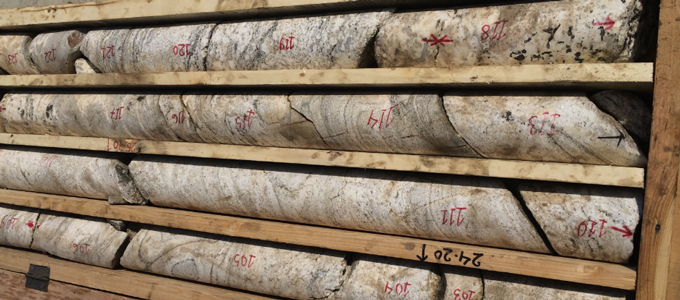
Local contractors are commonly engaged for geological investigations due to the need for heavy excavators and drill rigs. The contractors must be experienced with well-maintained equipment that is appropriate for the task (hole size, hole depths and geological conditions). Appropriate drilling techniques are required to maximise core recovery in the areas of interest, even if they take some time.
Developers must not underestimate the challenges of site access. A significant amount of time can be lost repairing broken plant in remote locations, so the proposed plant should be inspected and tested before site mobilisation.
Laboratory testing should only be performed at reputable laboratories, otherwise there is a risk of destroying samples and wasting time and money for little benefit. Typically, we use local laboratories for common tests, such as those used for concrete manufacture or road construction, and we may use specialised laboratories for more complex or unusual testing.
The outcome of Step 3 in our five-step process is significantly more factual geological and geotechnical information.
Step 4 – Update geological model
Step 4 is to interpret this additional factual information, and to update the preliminary geological model (developed in Step 1). This will improve understanding of the geological risks at the site, which is the key return on the investment made in the investigation program.
Step 5 – Undertake phase 2 investigation campaign
Step 5, the final step in the process, is a phase 2 investigation campaign. It is very common for hydropower projects to undertake more than one geological investigation campaign. This is because the geological model may change due to the information discovered in the first campaign, which may raise further questions or unknowns.
The second campaign, if required, is likely to be very focused, as it will be addressing a specific question, and will help to finalise the geological model.
Asking the right questions
Rather than asking how many holes are normally drilled for a dam project or how much money is normally spent on geological investigations, hydropower developers should ask: ‘is the money being spent wisely and for a clear purpose?’
Geological investigations do not reduce geological risks; they merely improve the understanding of the risks. A good understanding of the geological conditions reduces the uncertainty of capital cost, and therefore enables developers to make well-informed and less risky investment decisions.
To discuss how Entura can assist you to better understand the geological risks to your hydropower project, please contact Shekhar Prince on +61 412 402 110 or Richard Herweynen on +61 3 6245 4130.
About the author
Richard Herweynen is Entura’s Technical Director, Water. Richard has three decades of experience in dam and hydropower engineering, and has worked throughout the Indo-Pacific region on both dam and hydropower projects, covering all aspects including investigations, feasibility studies, detailed design, construction liaison, operation and maintenance and risk assessment for both new and existing projects. Richard has been part of a number of recent expert review panels for major water projects. He participated in the ANCOLD working group for concrete gravity dams and is the Chairman of the ICOLD technical committee on engineering activities in the planning process for water resources projects. Richard has won many engineering excellence and innovation awards (including Engineers Australia’s Professional Engineer of the Year 2012 – Tasmanian Division), and has published more than 30 technical papers on dam engineering.


